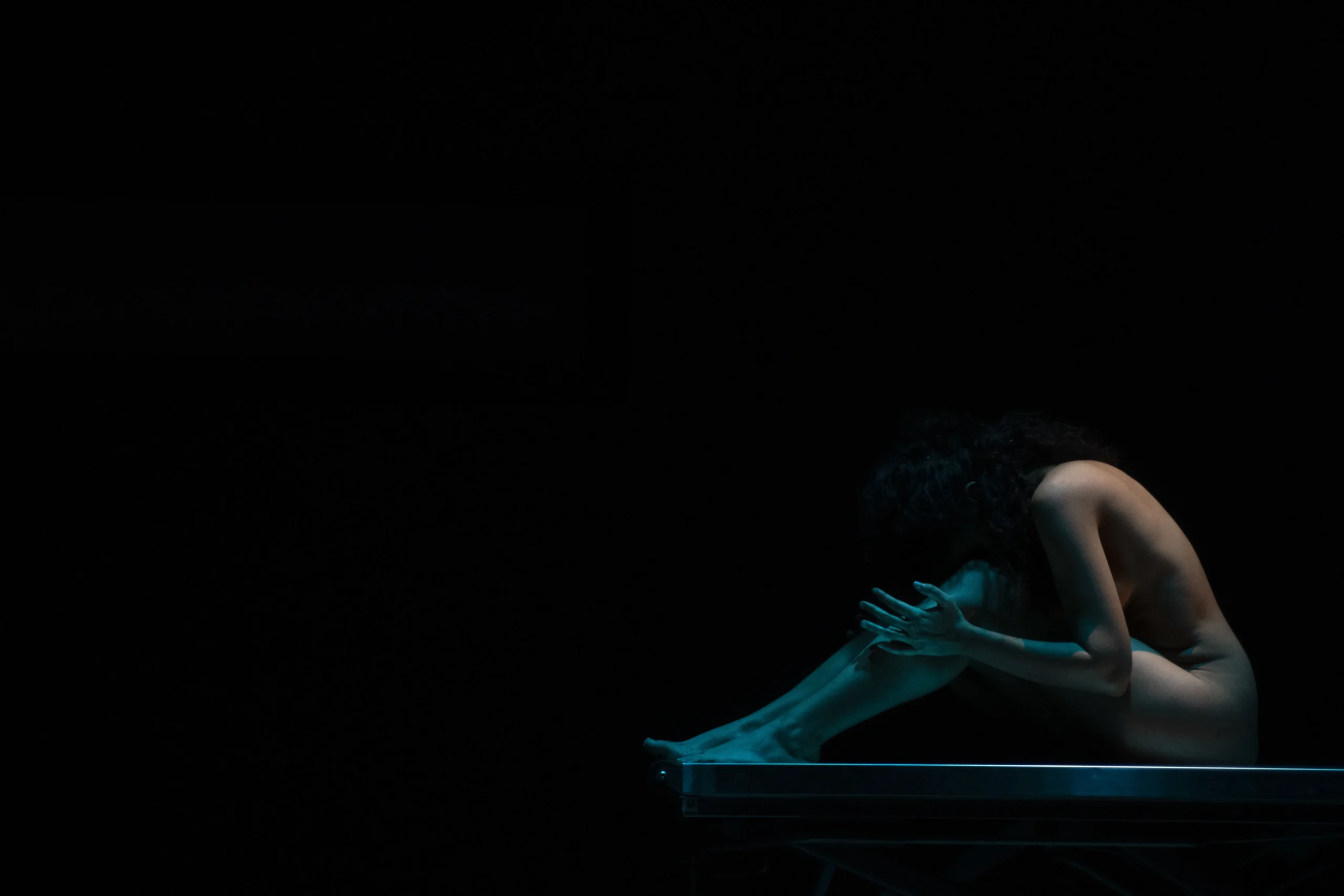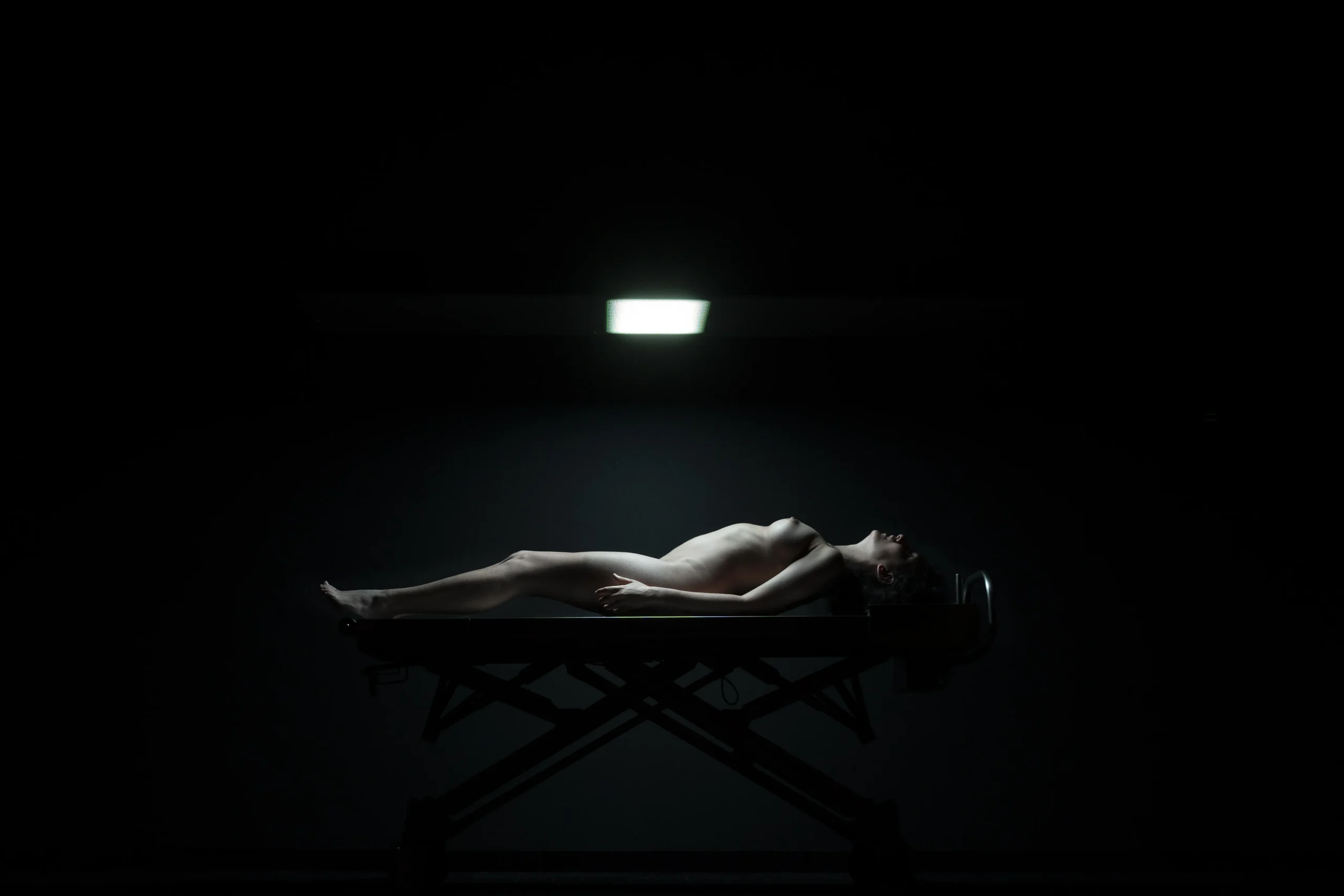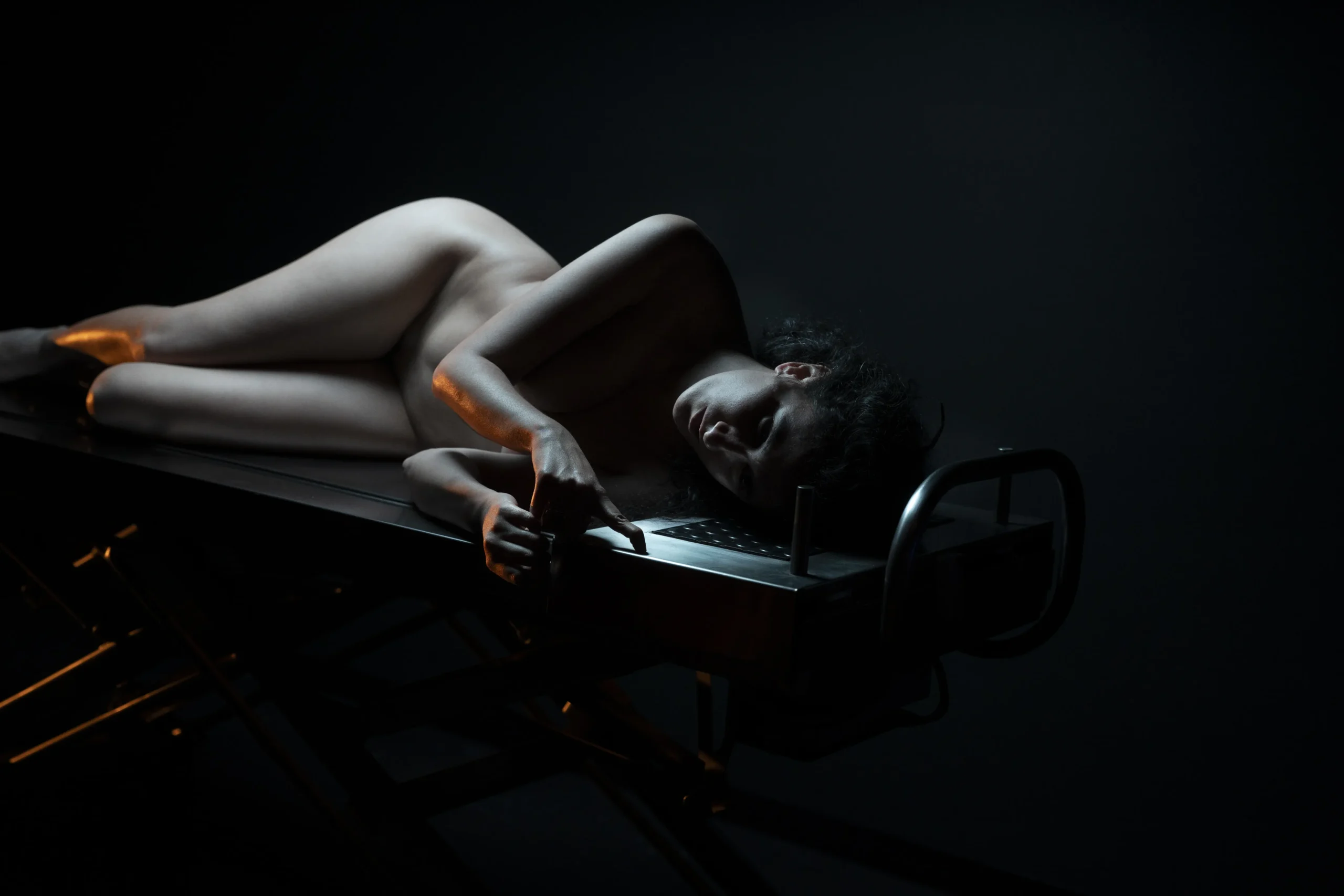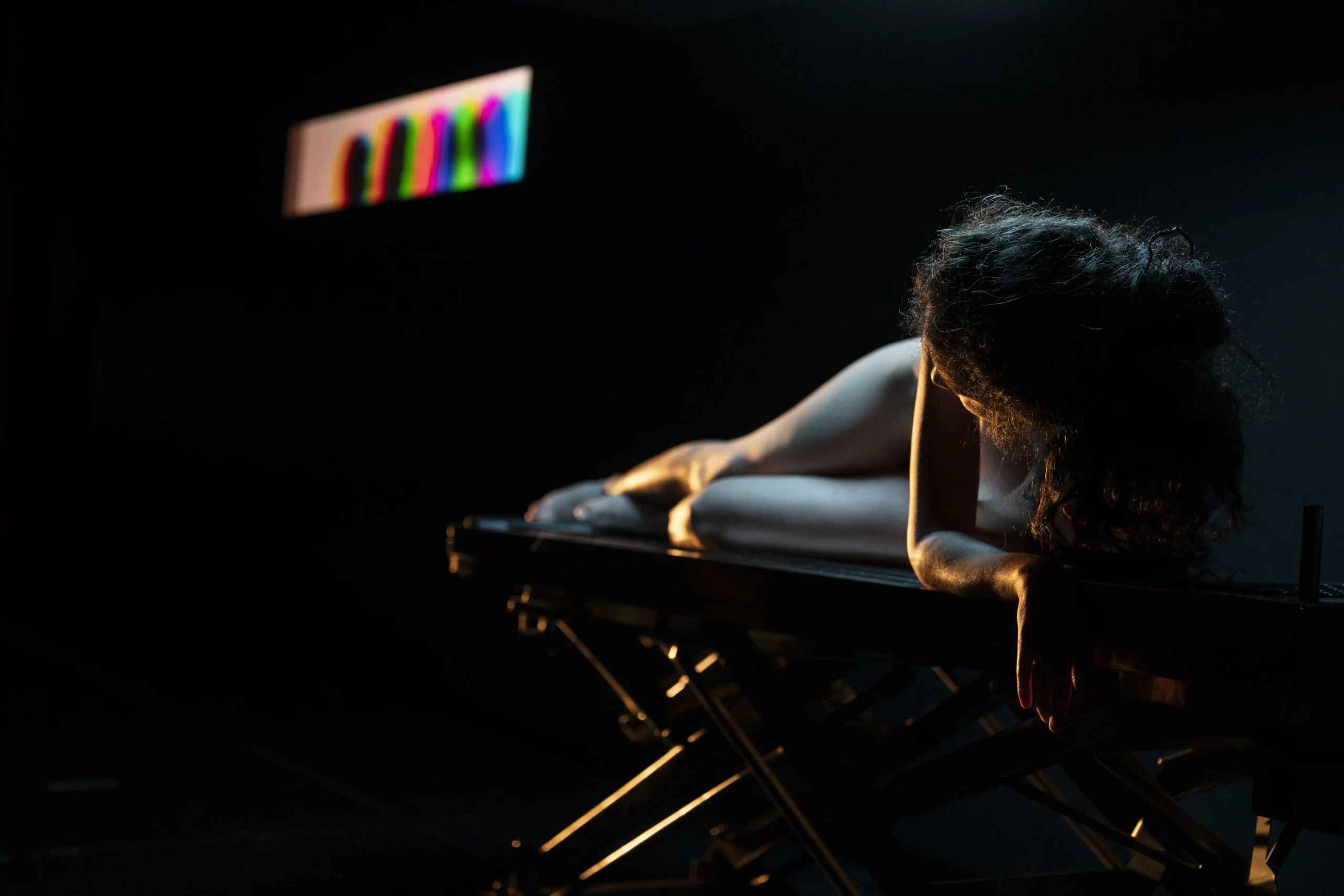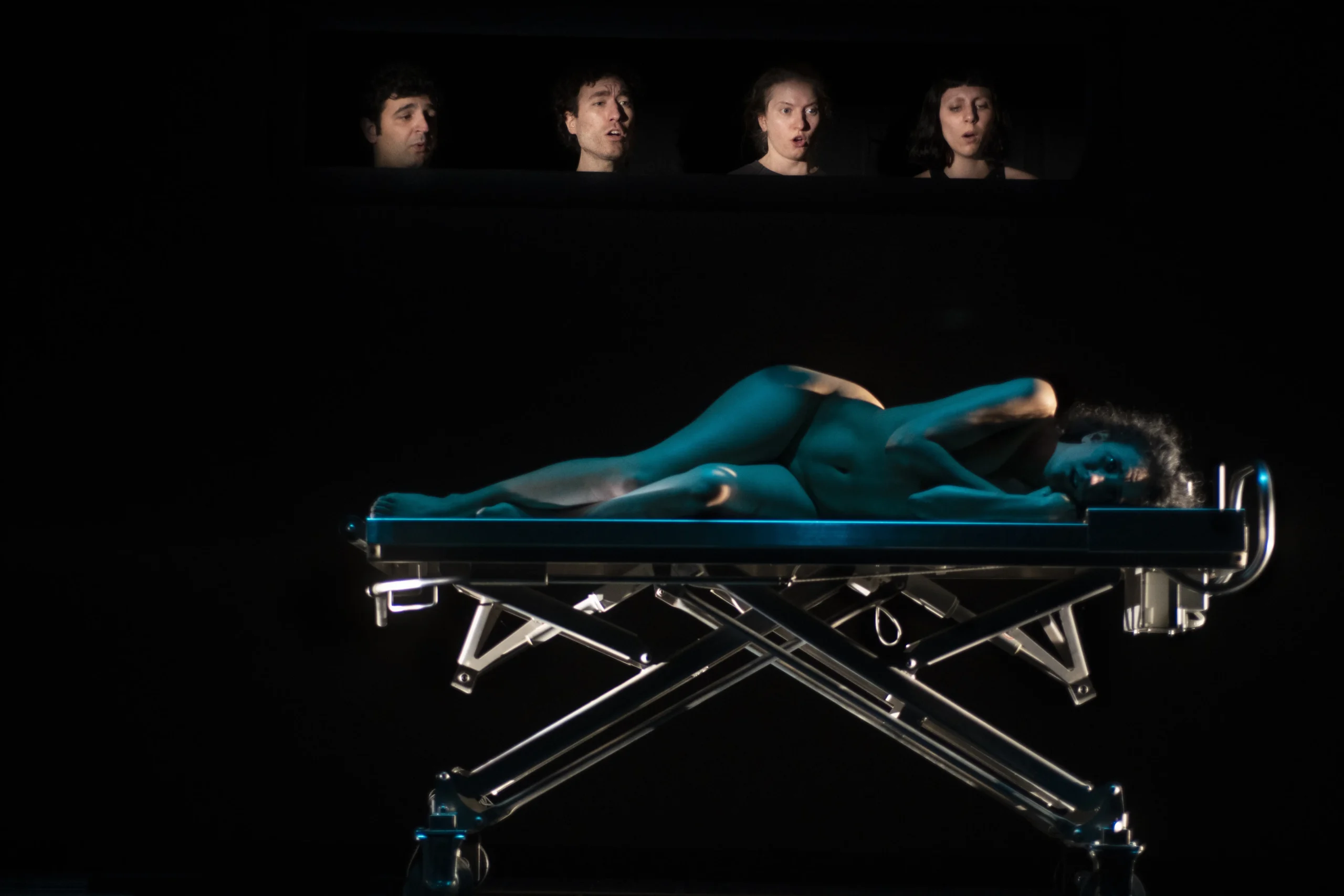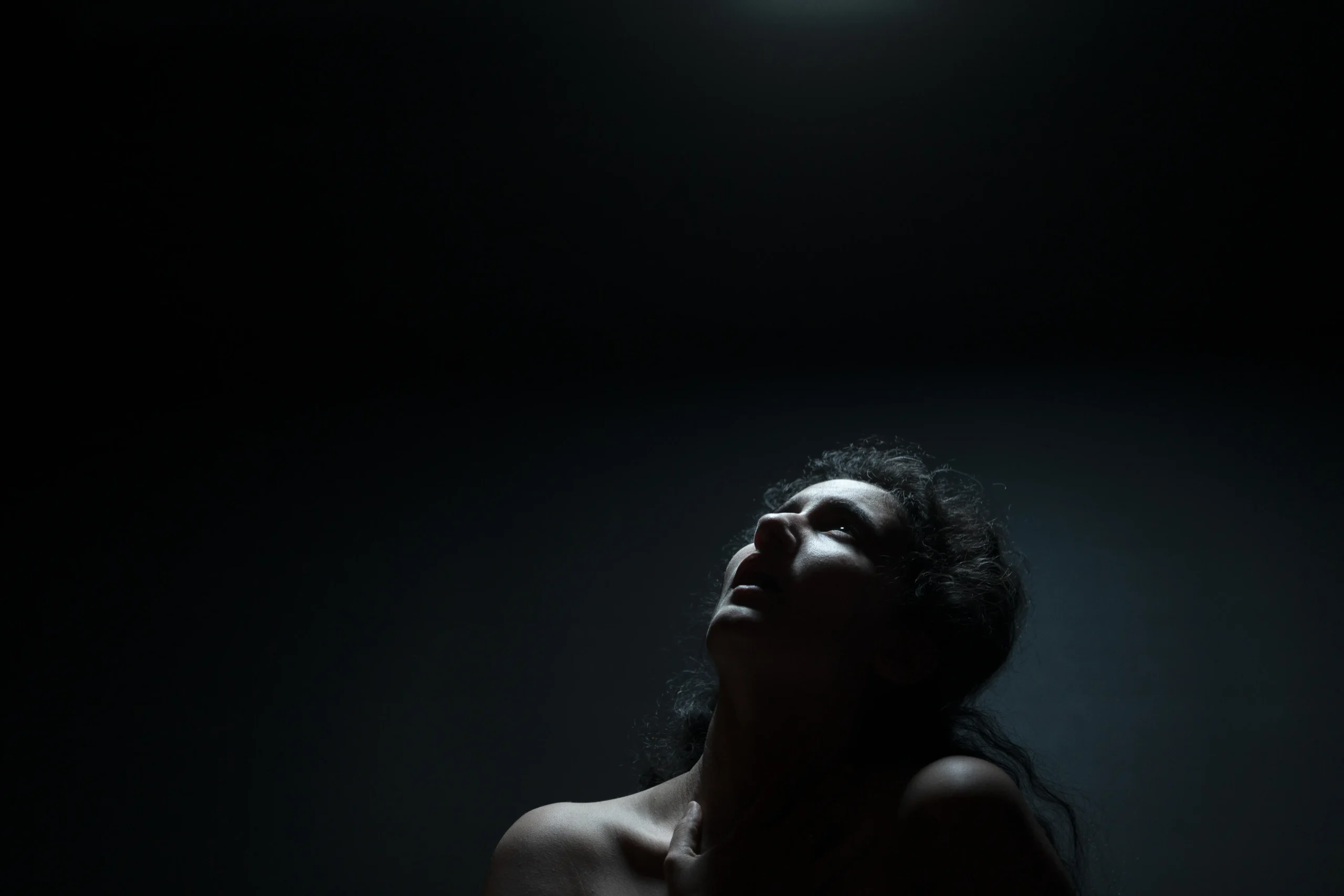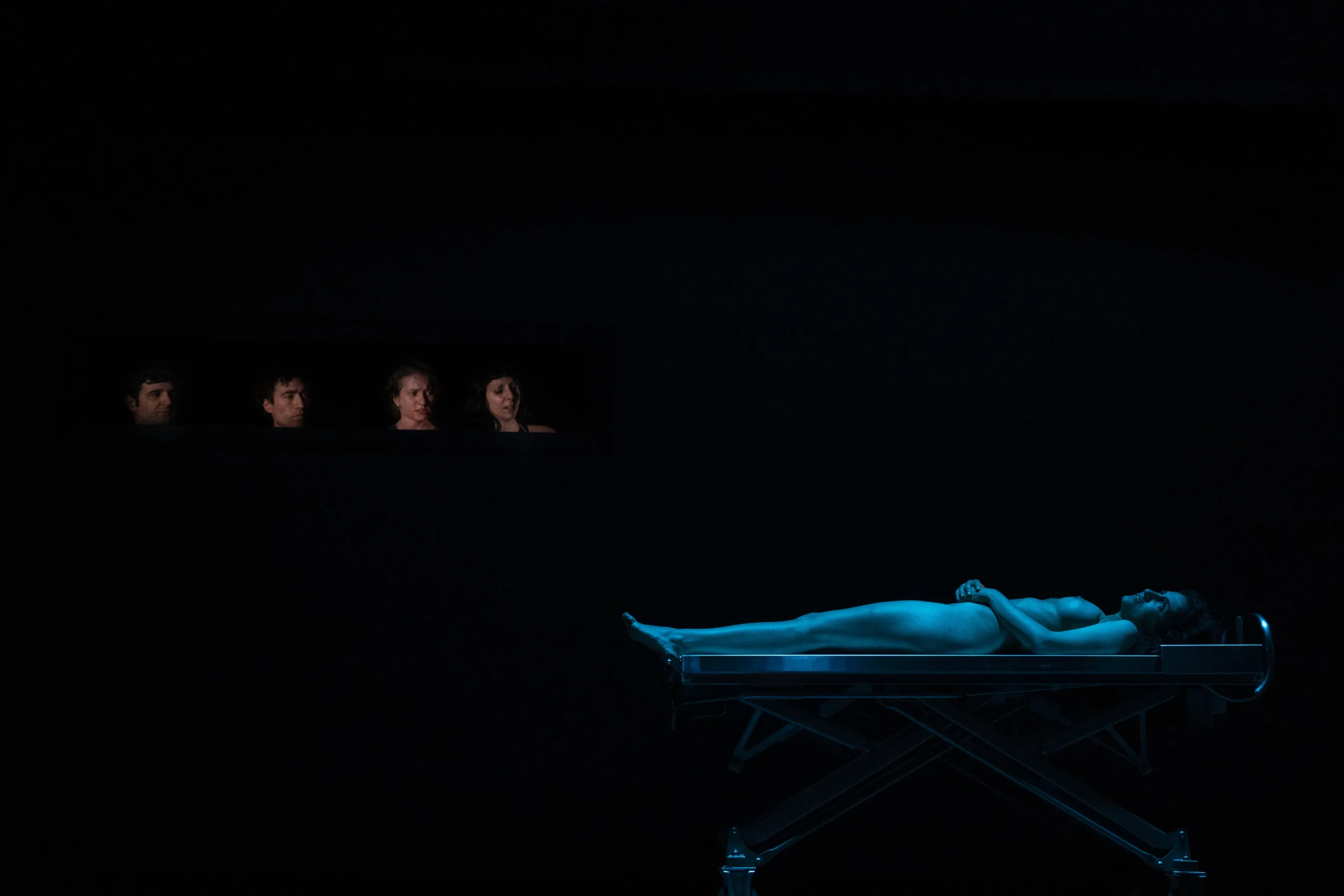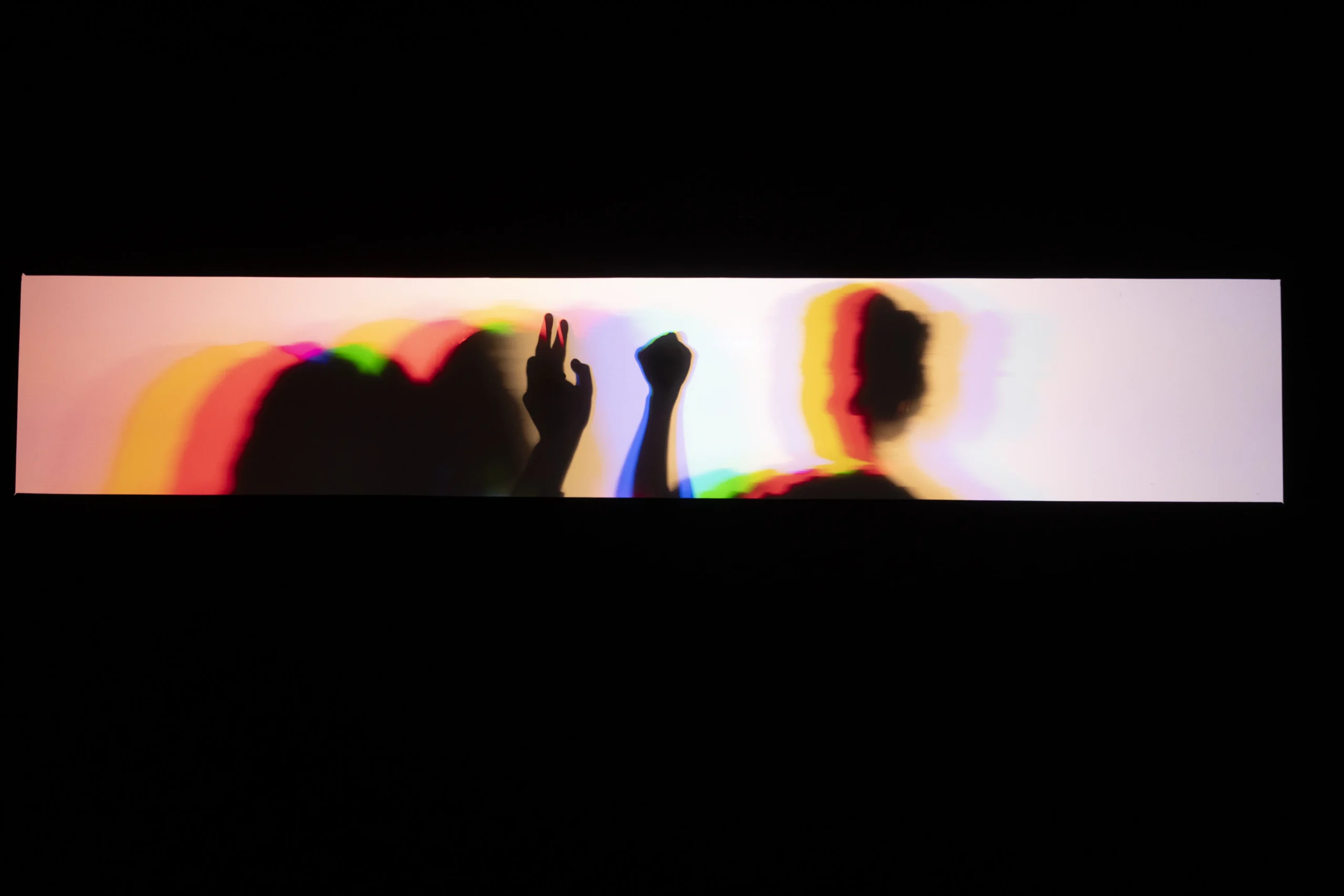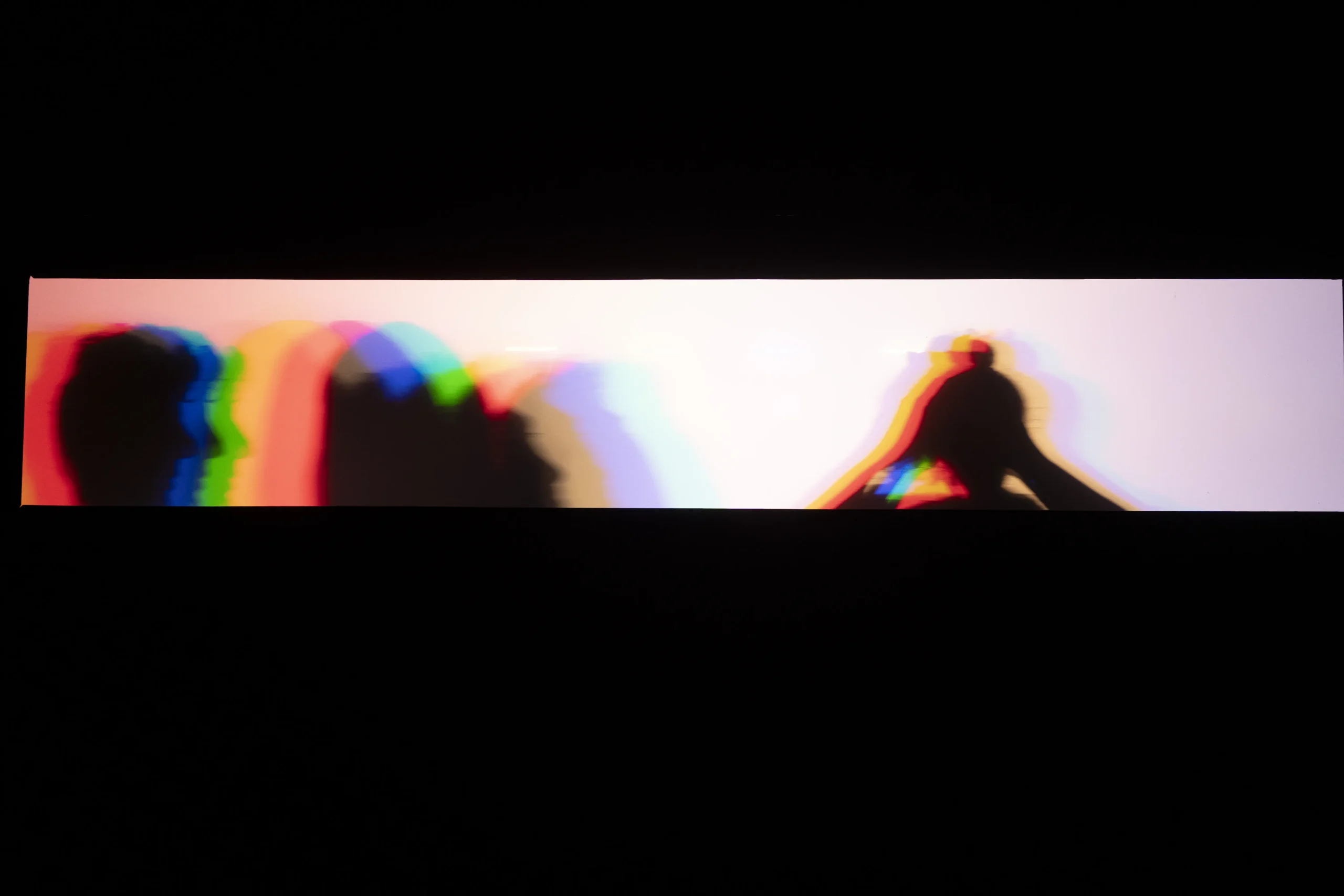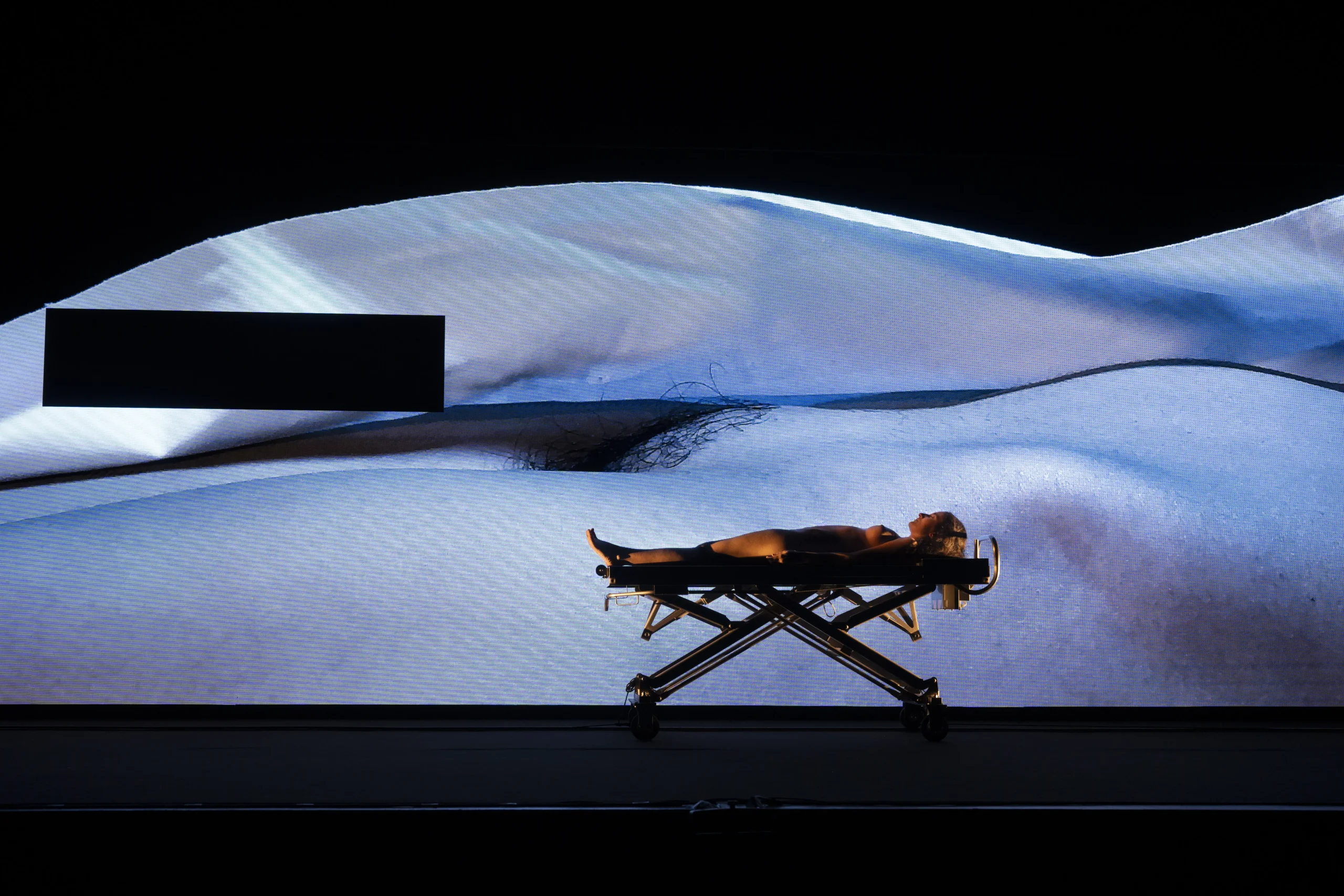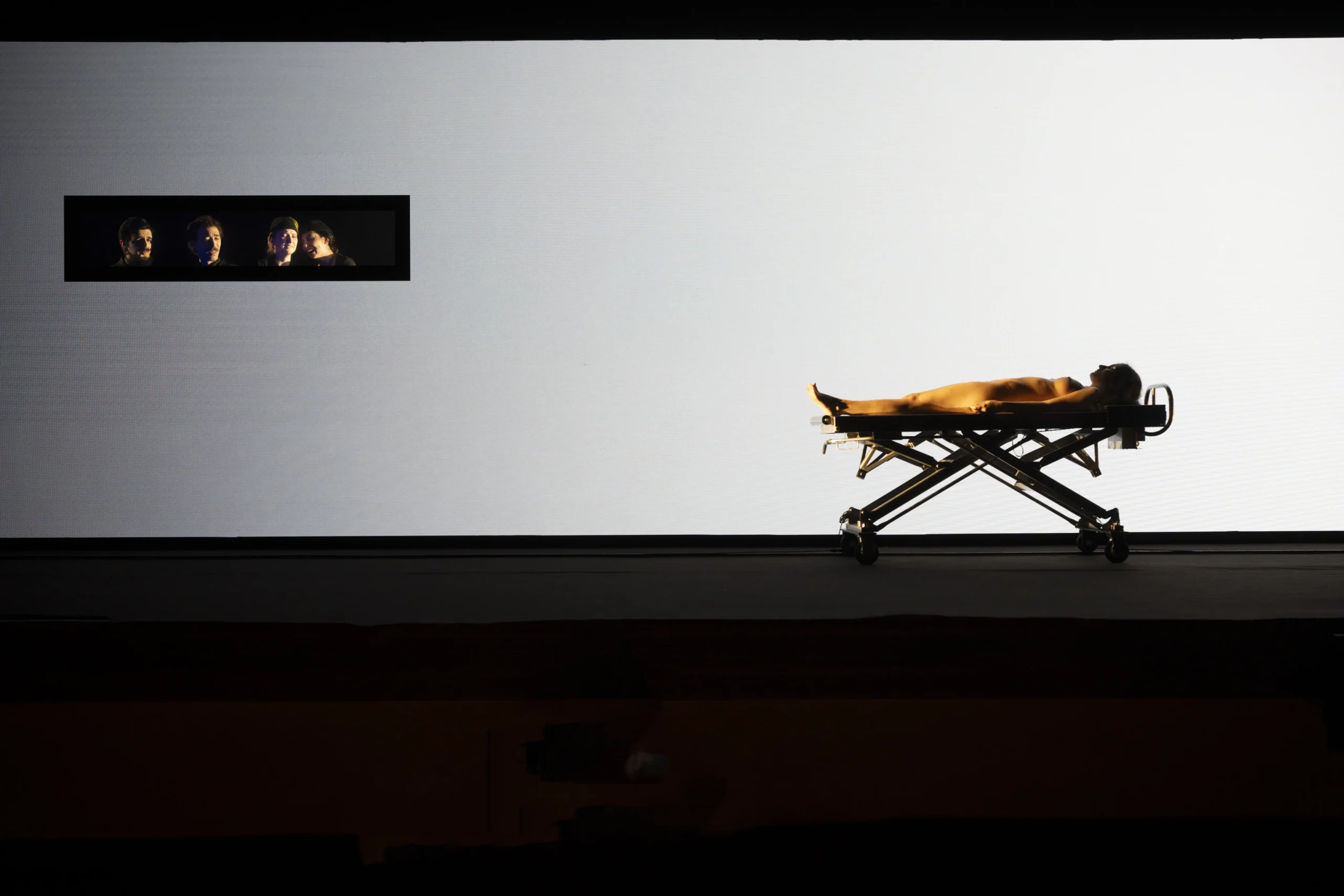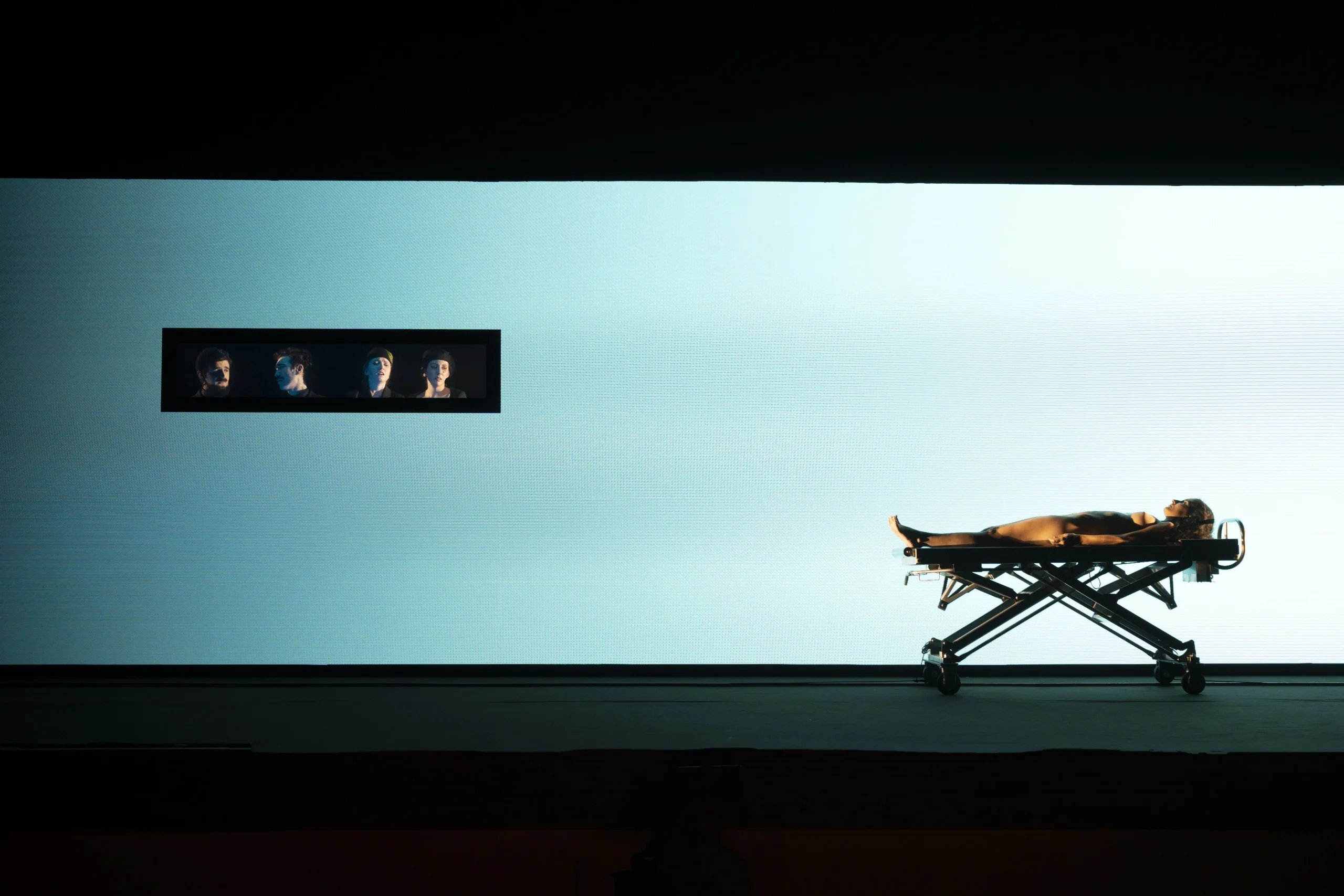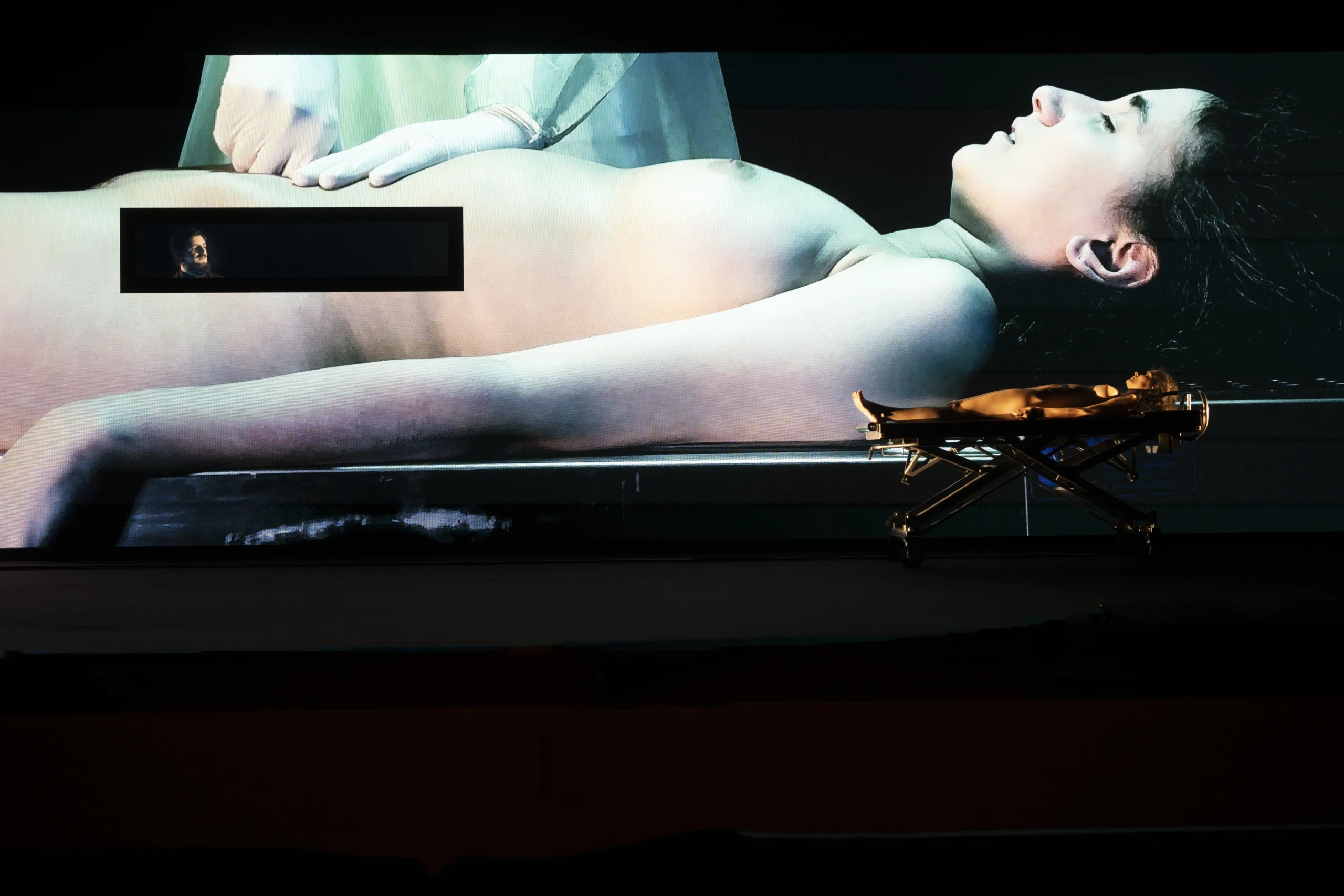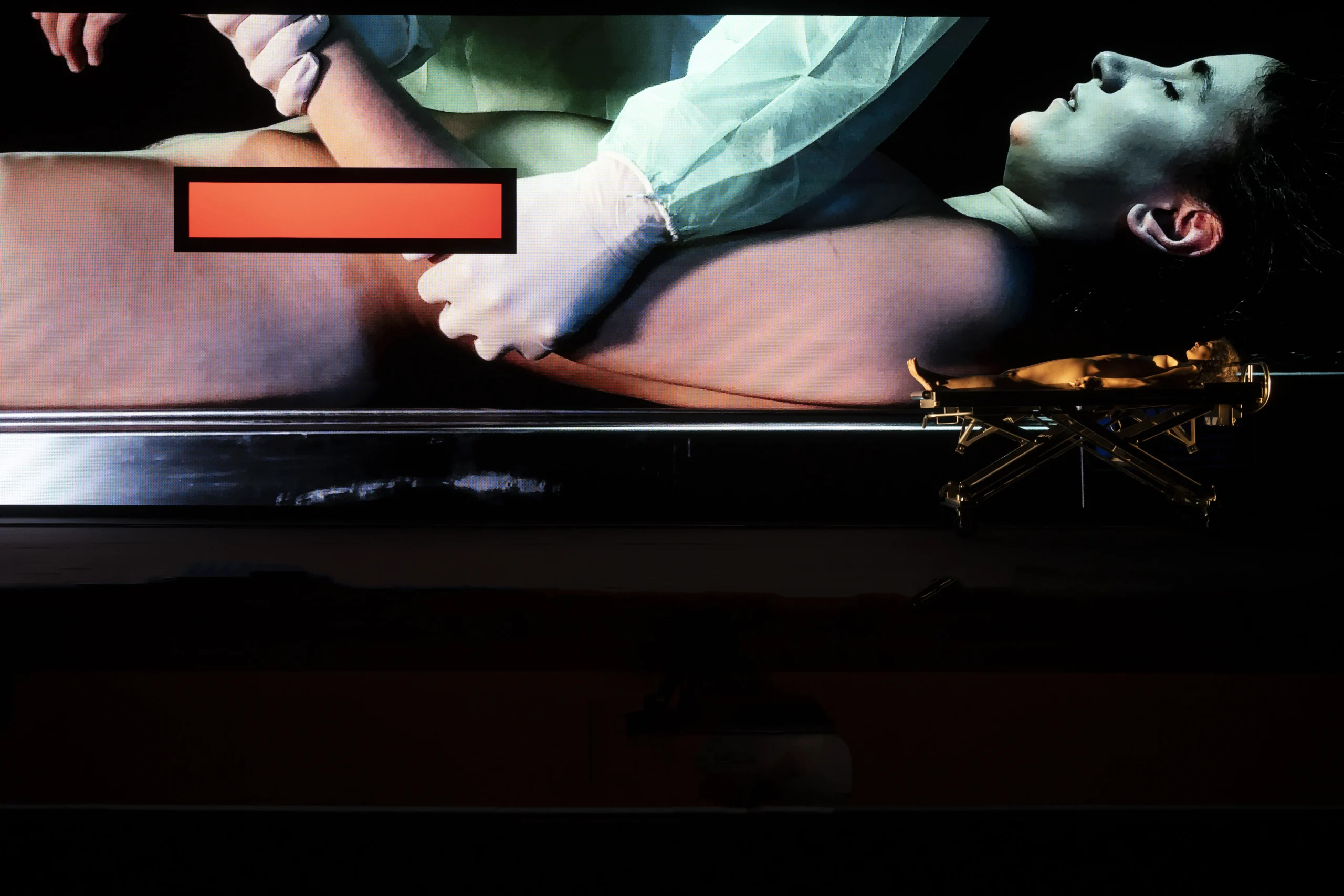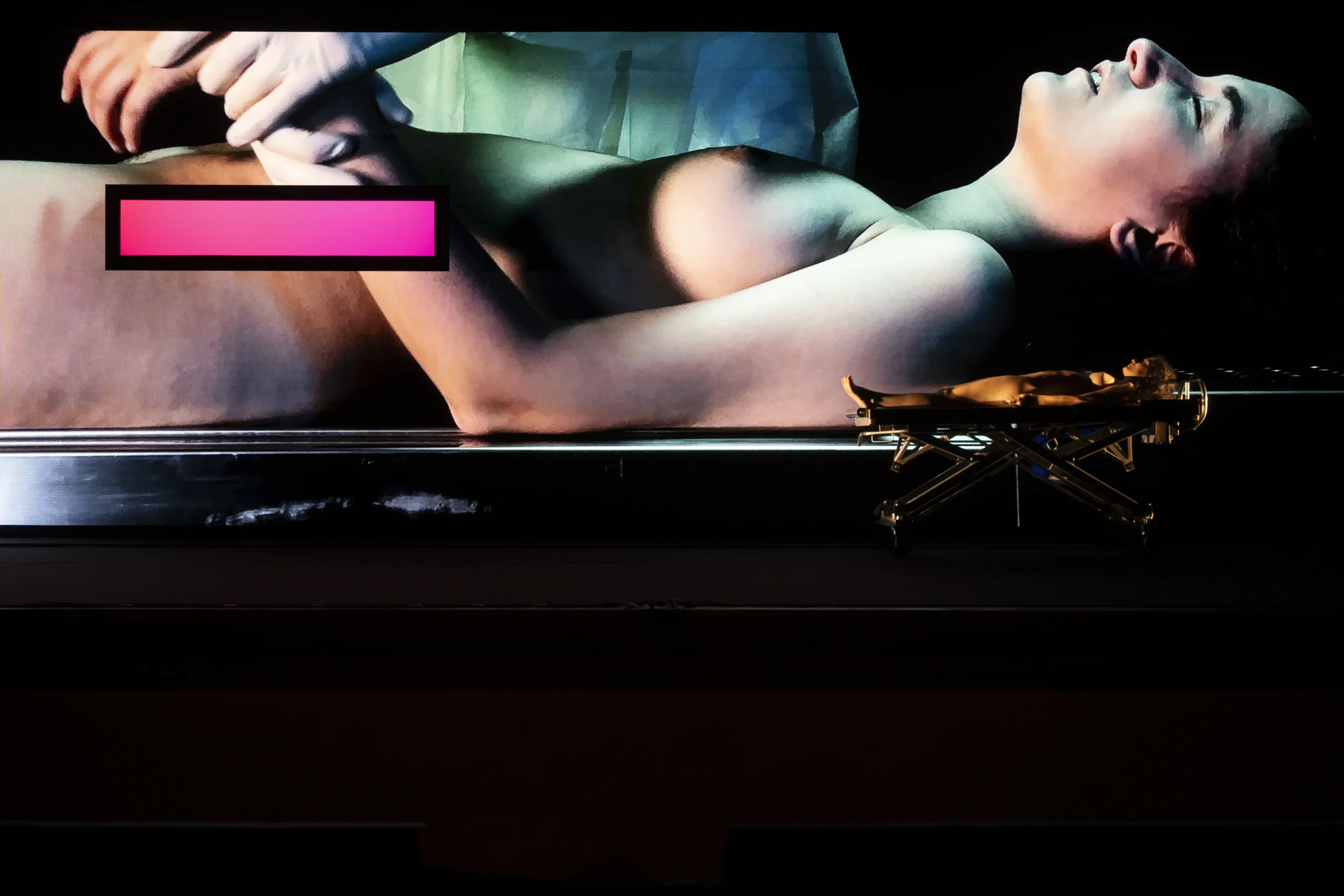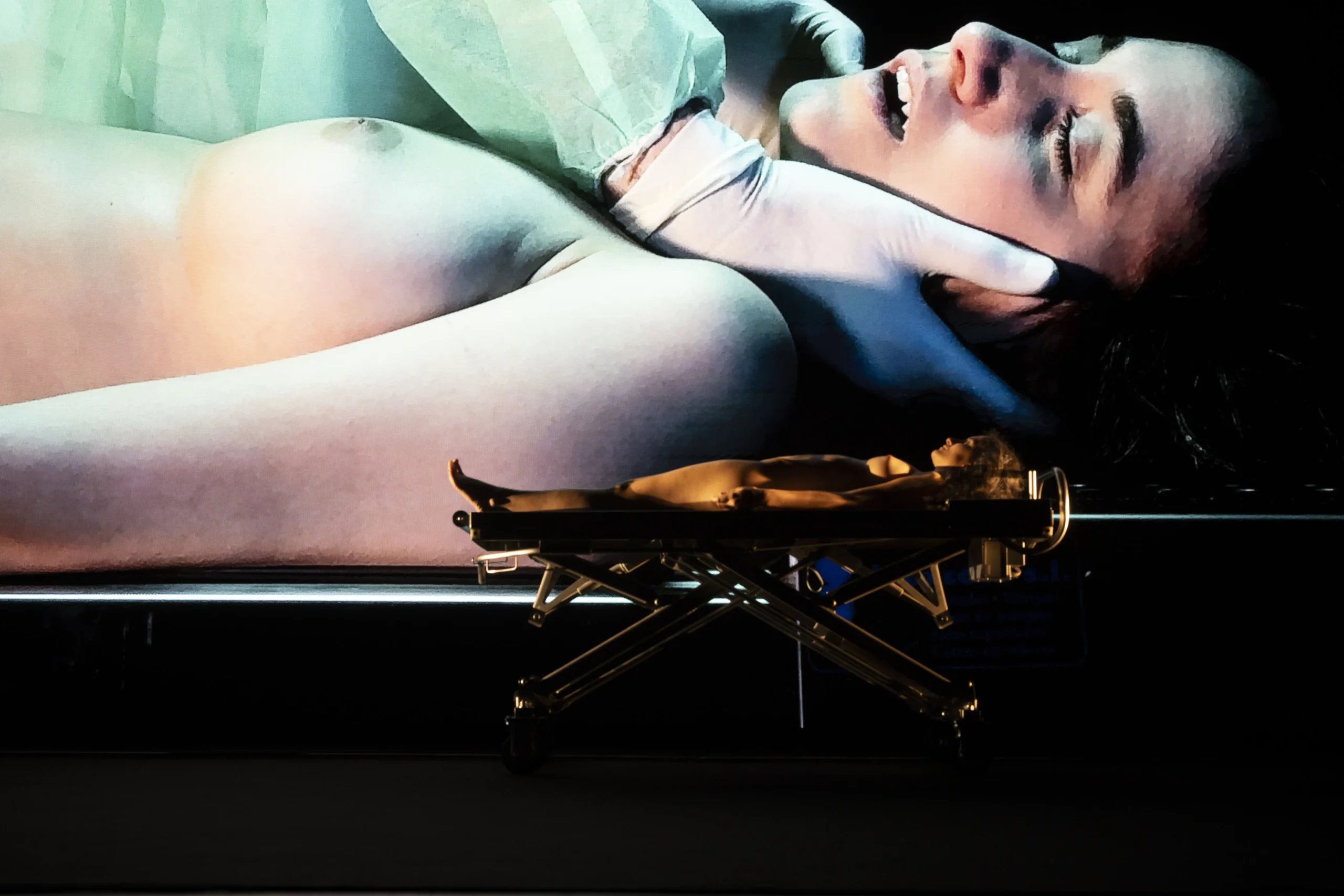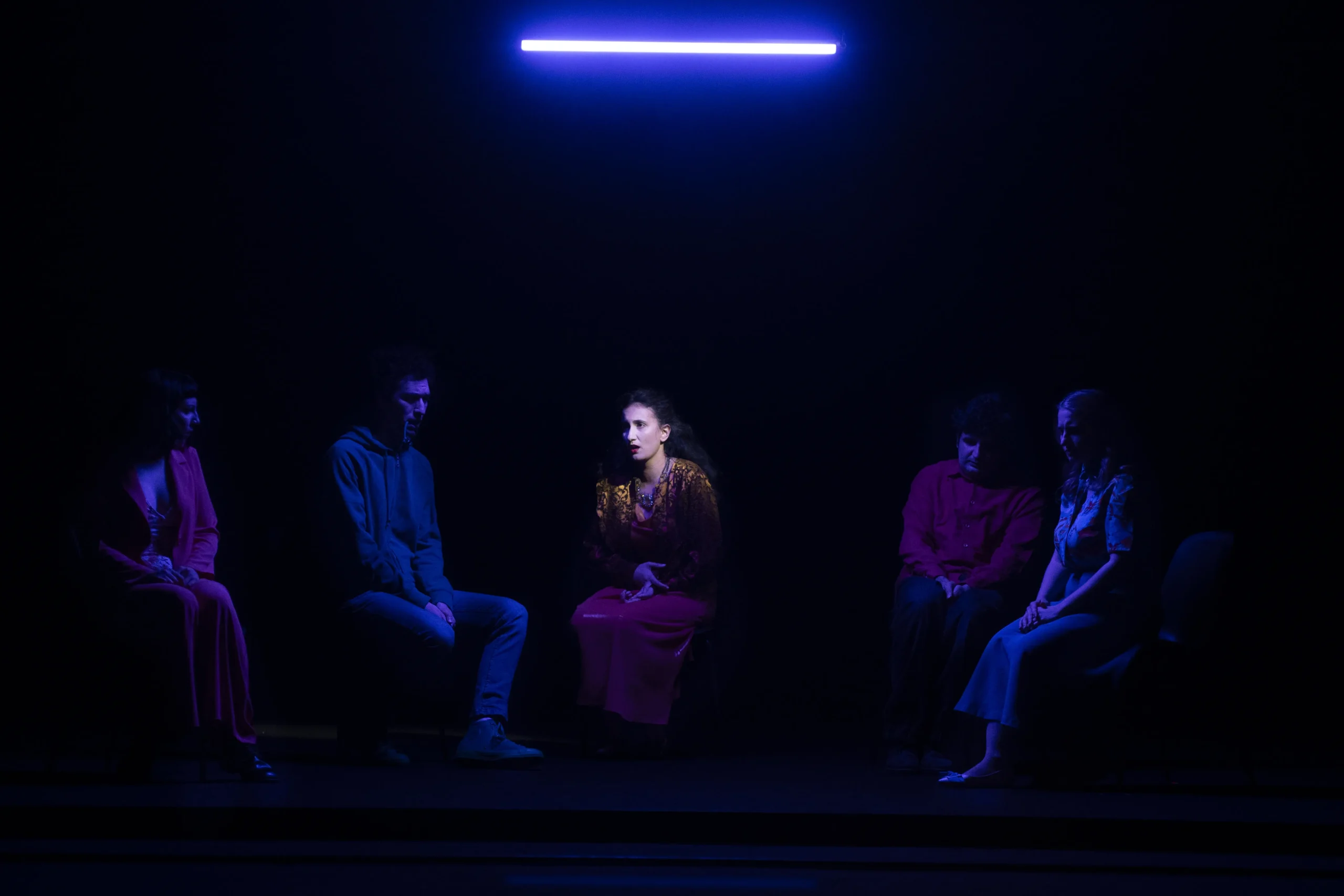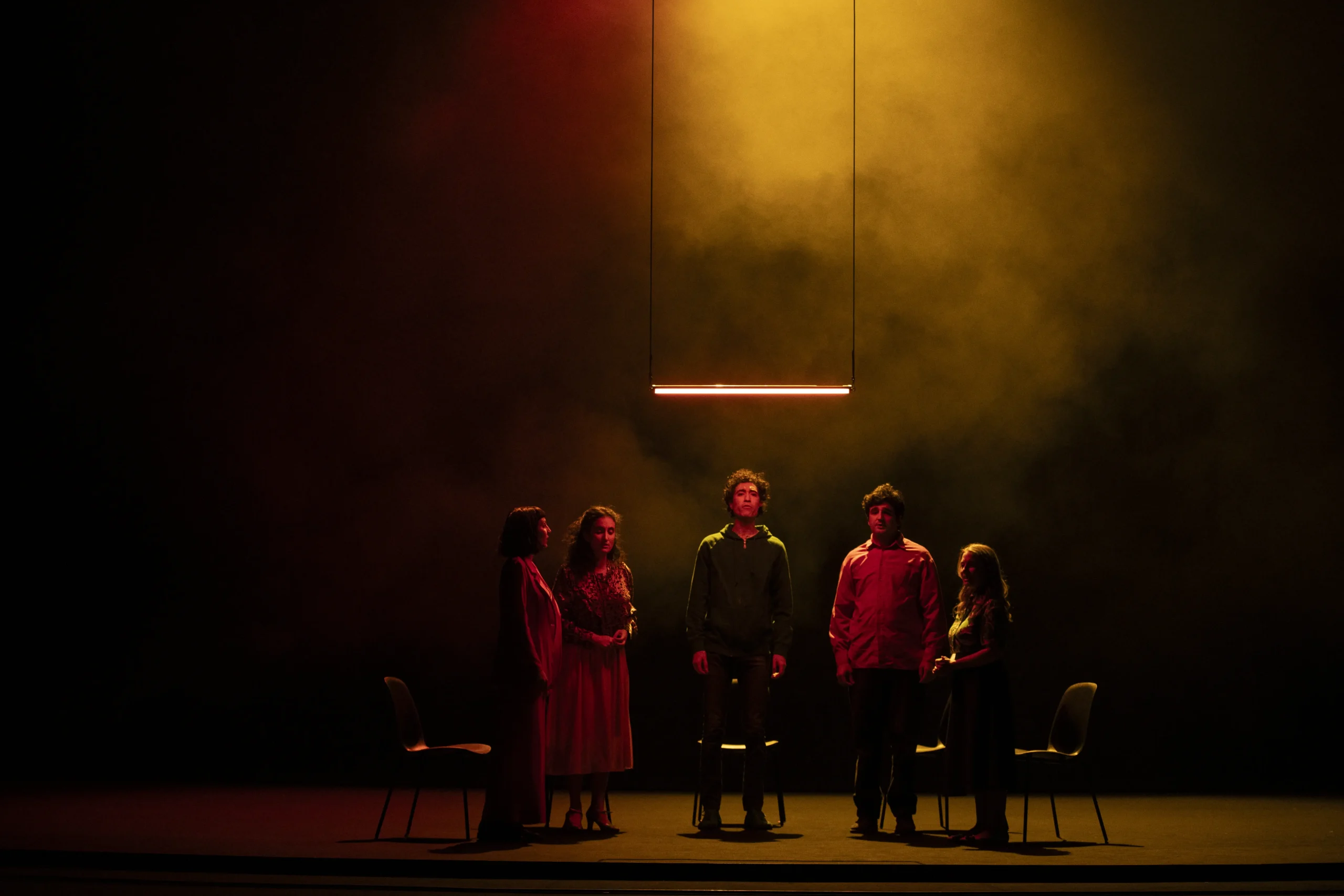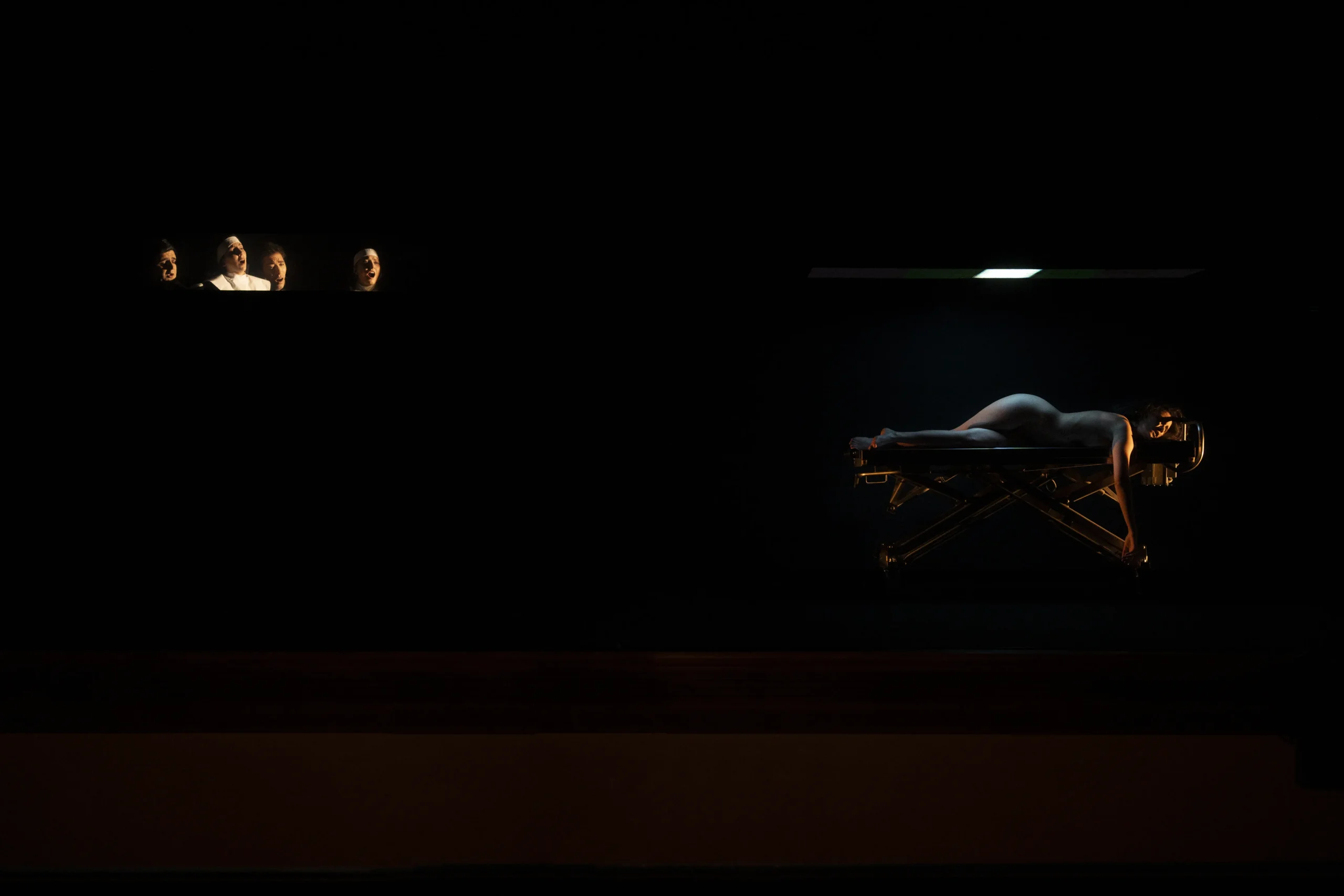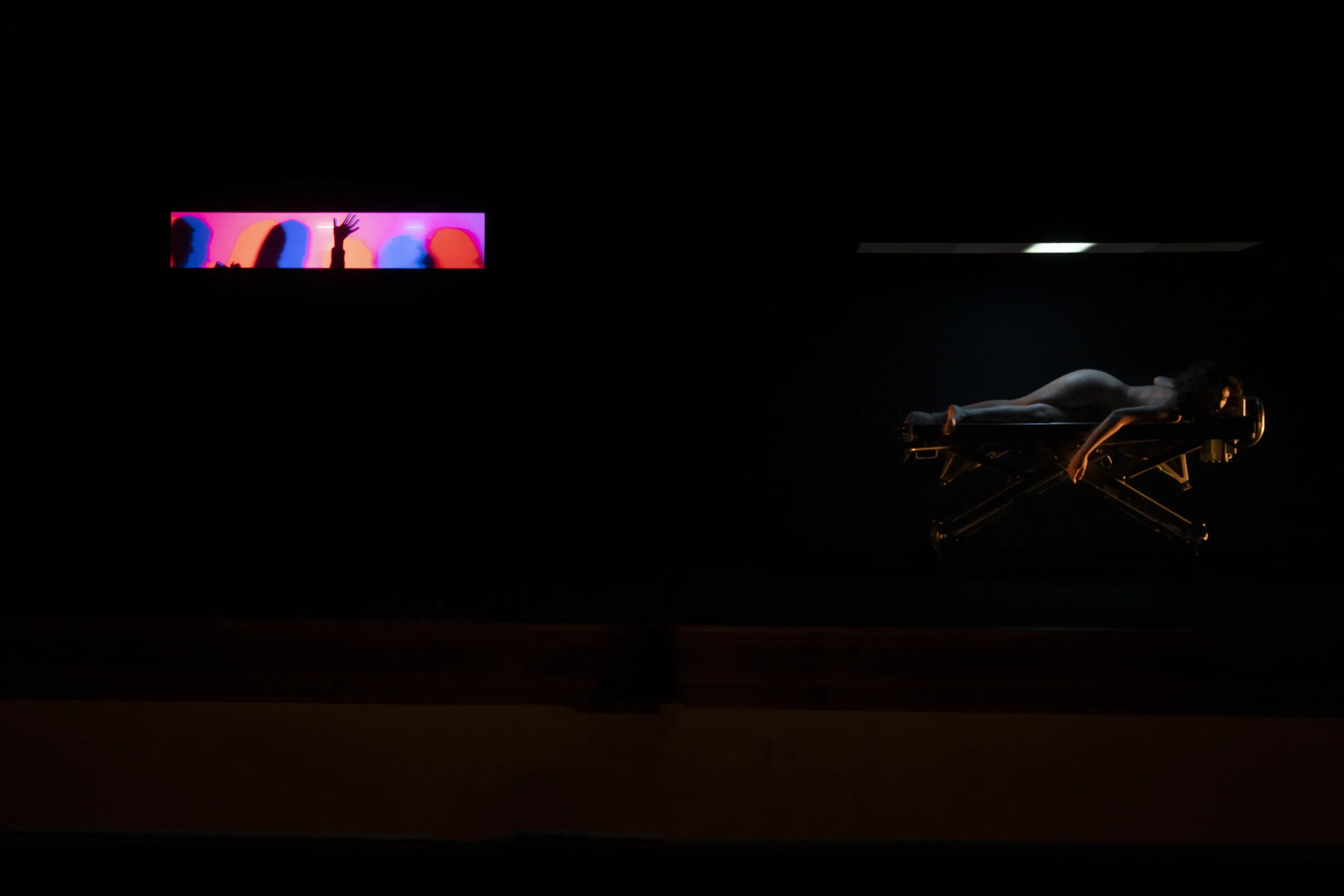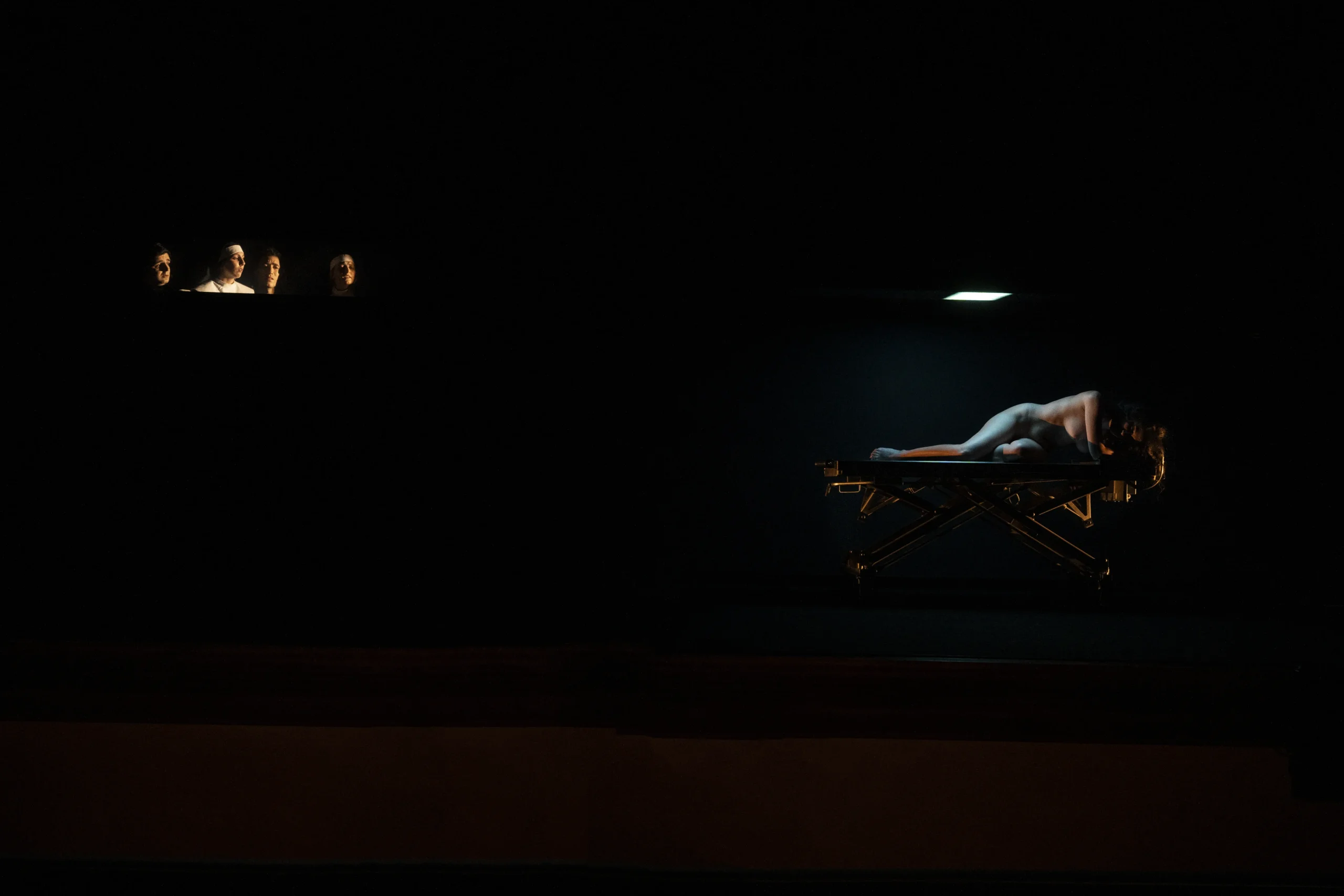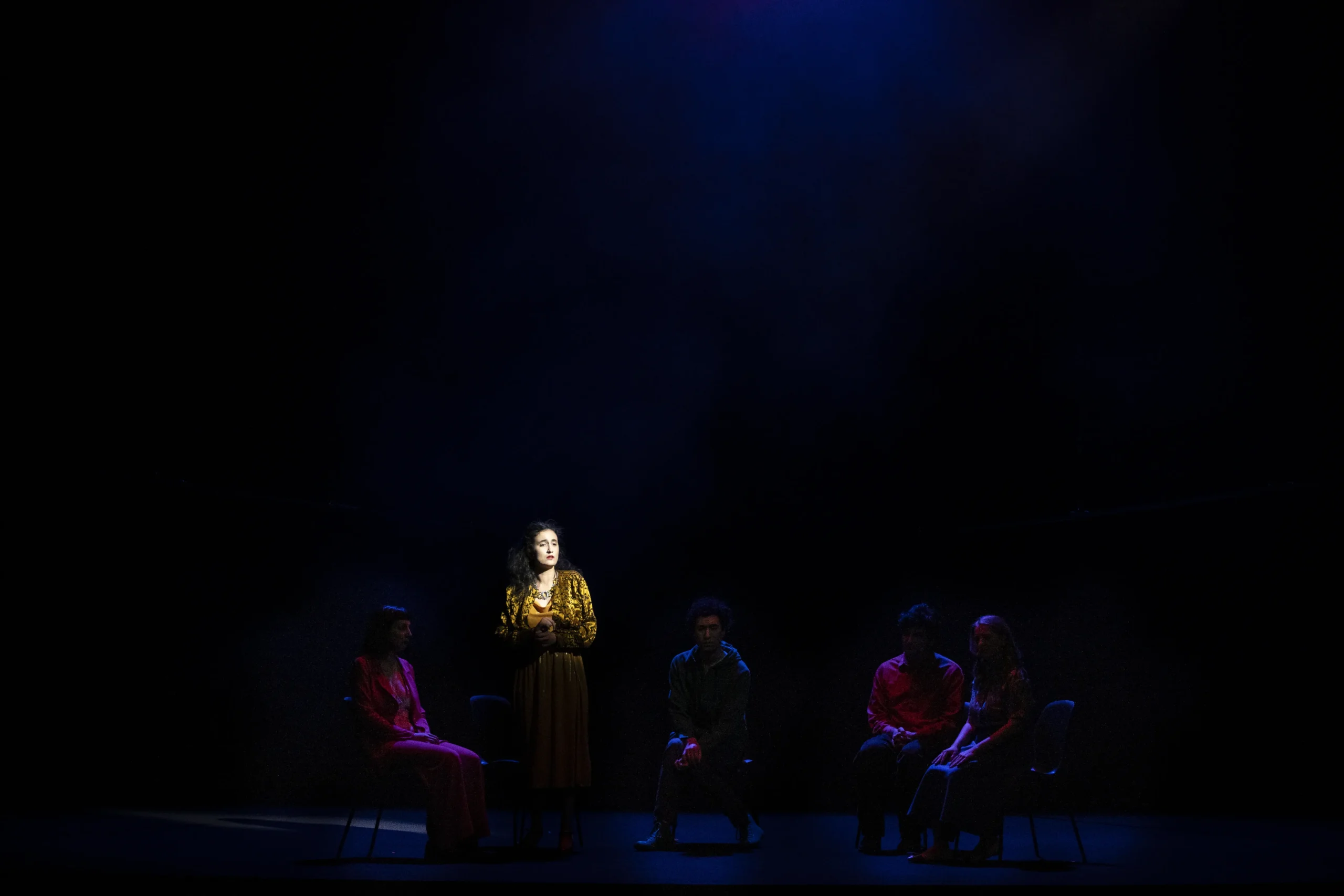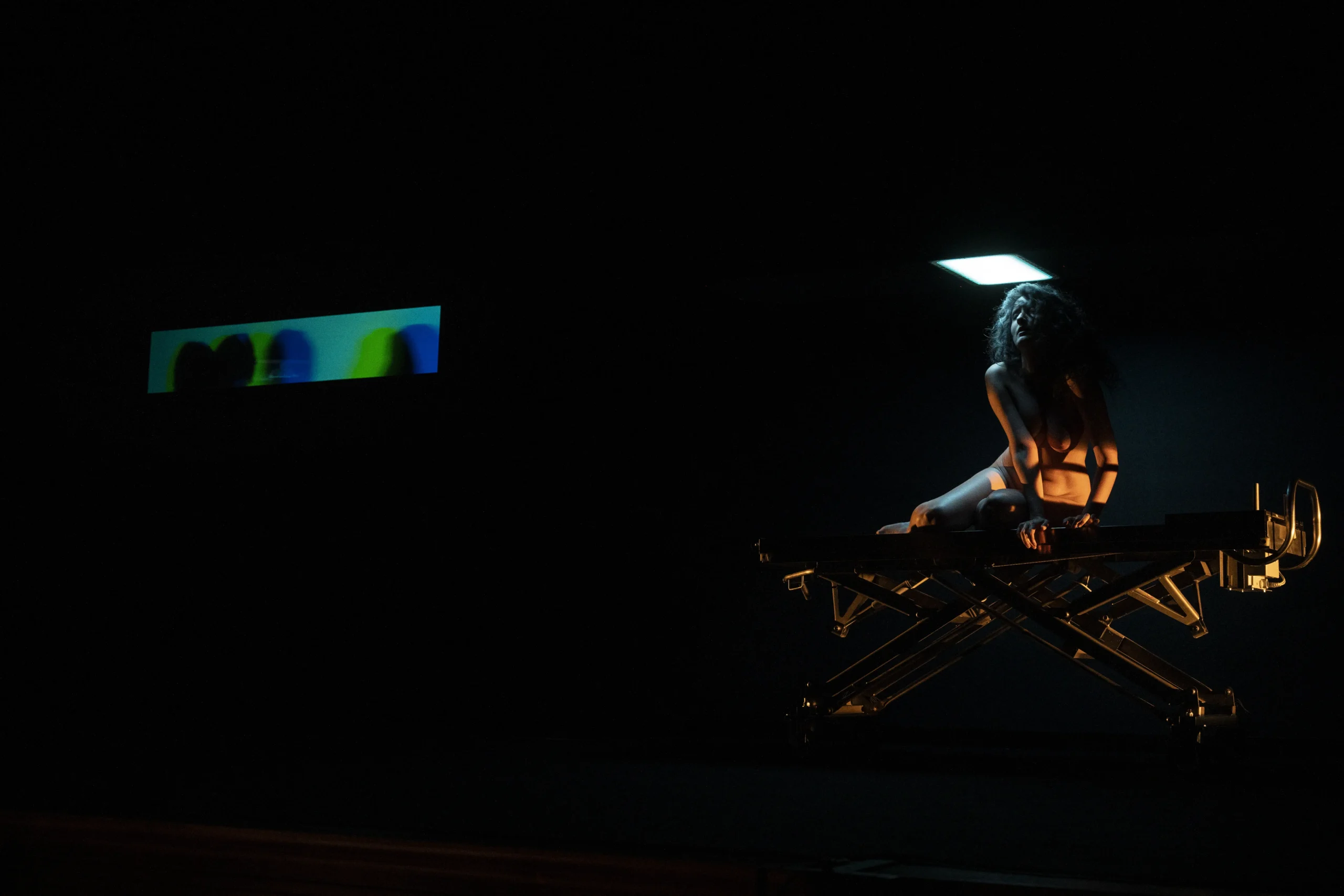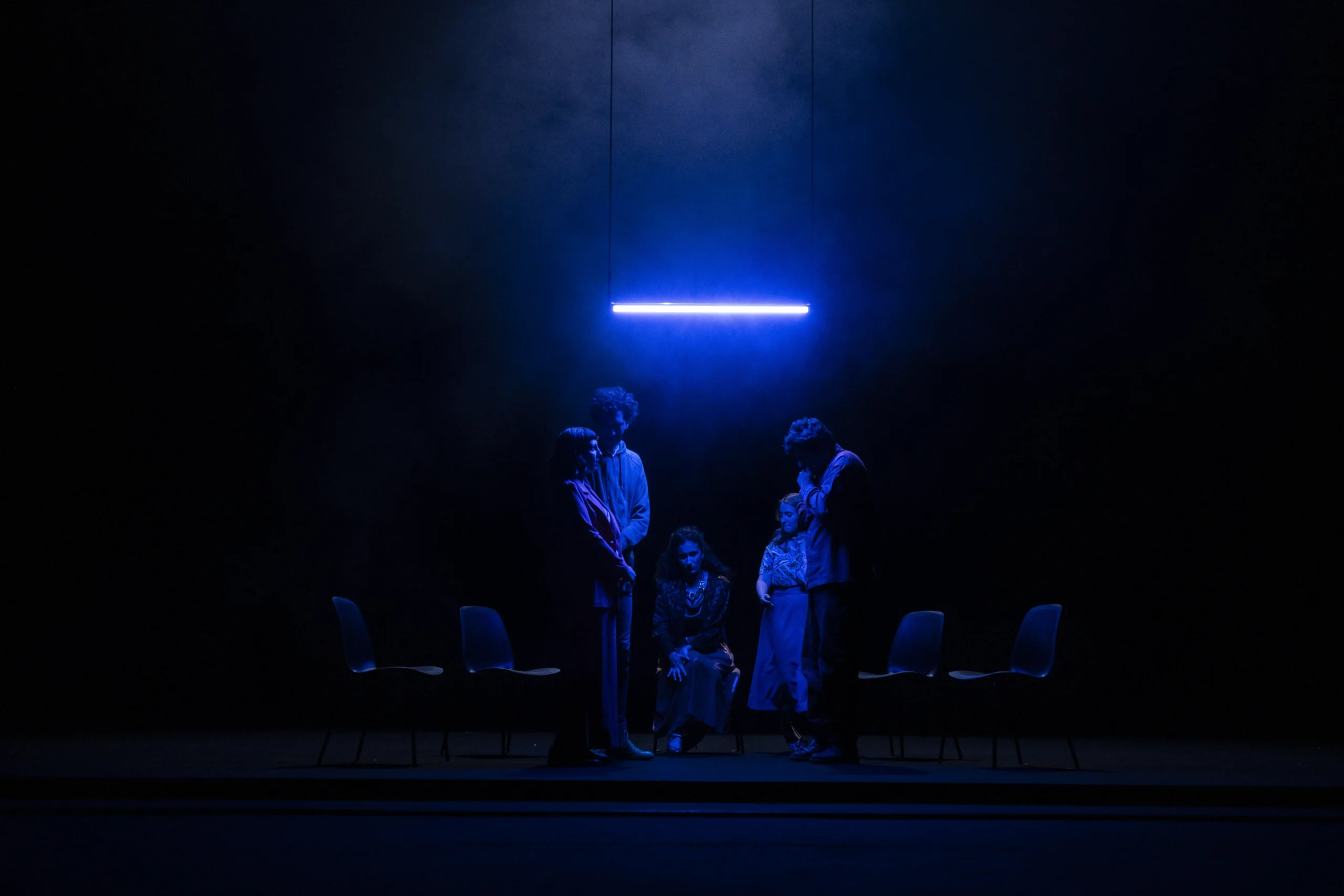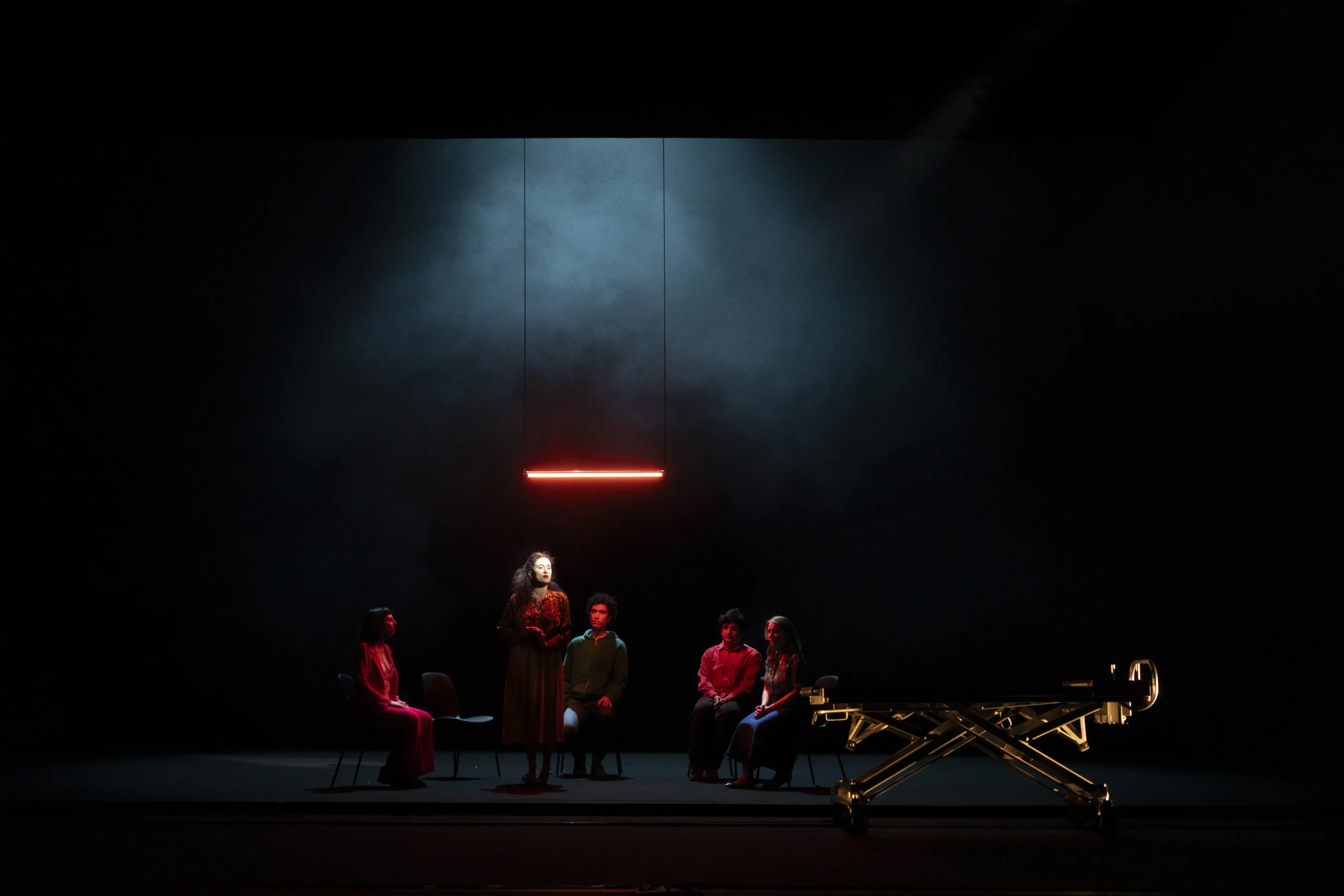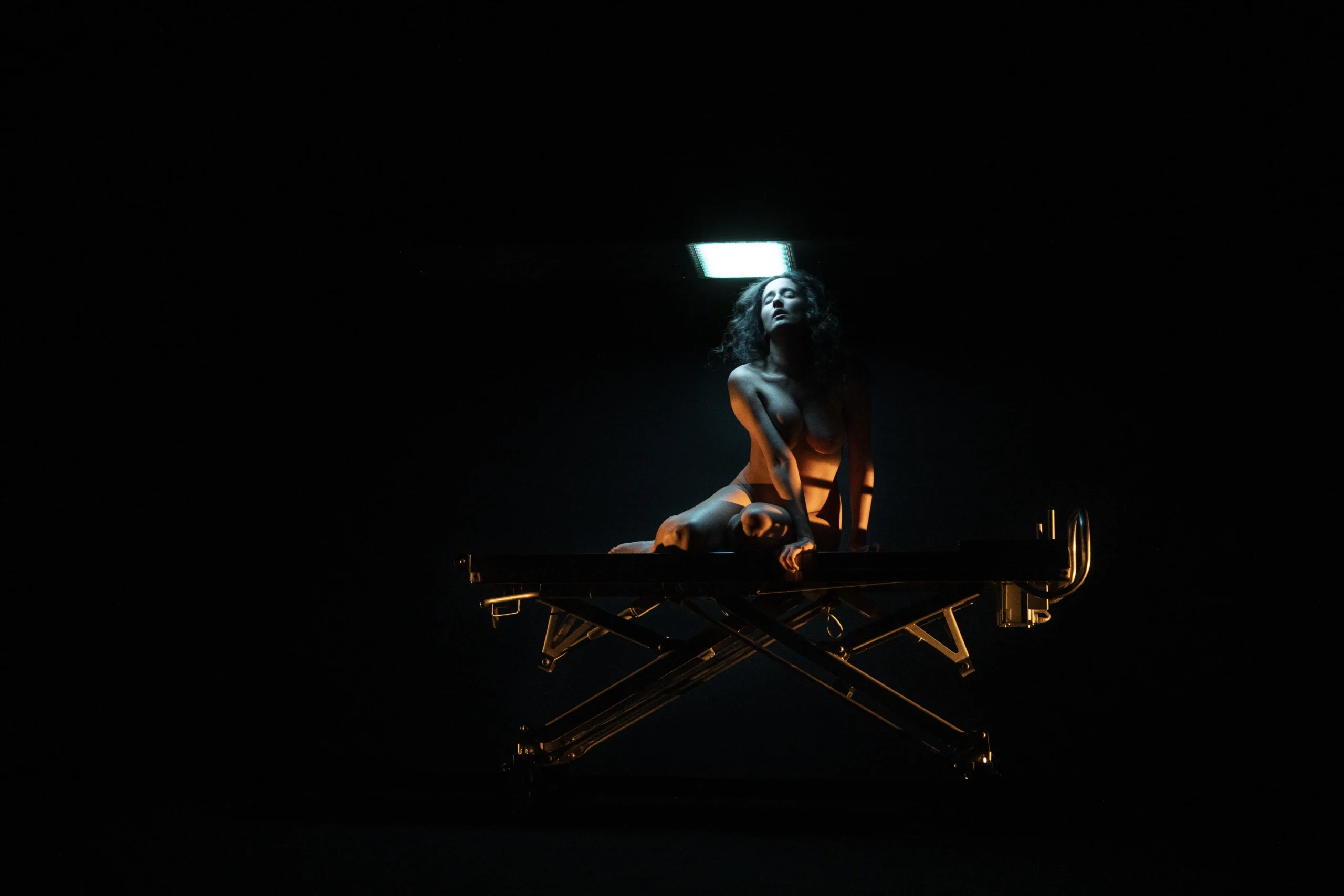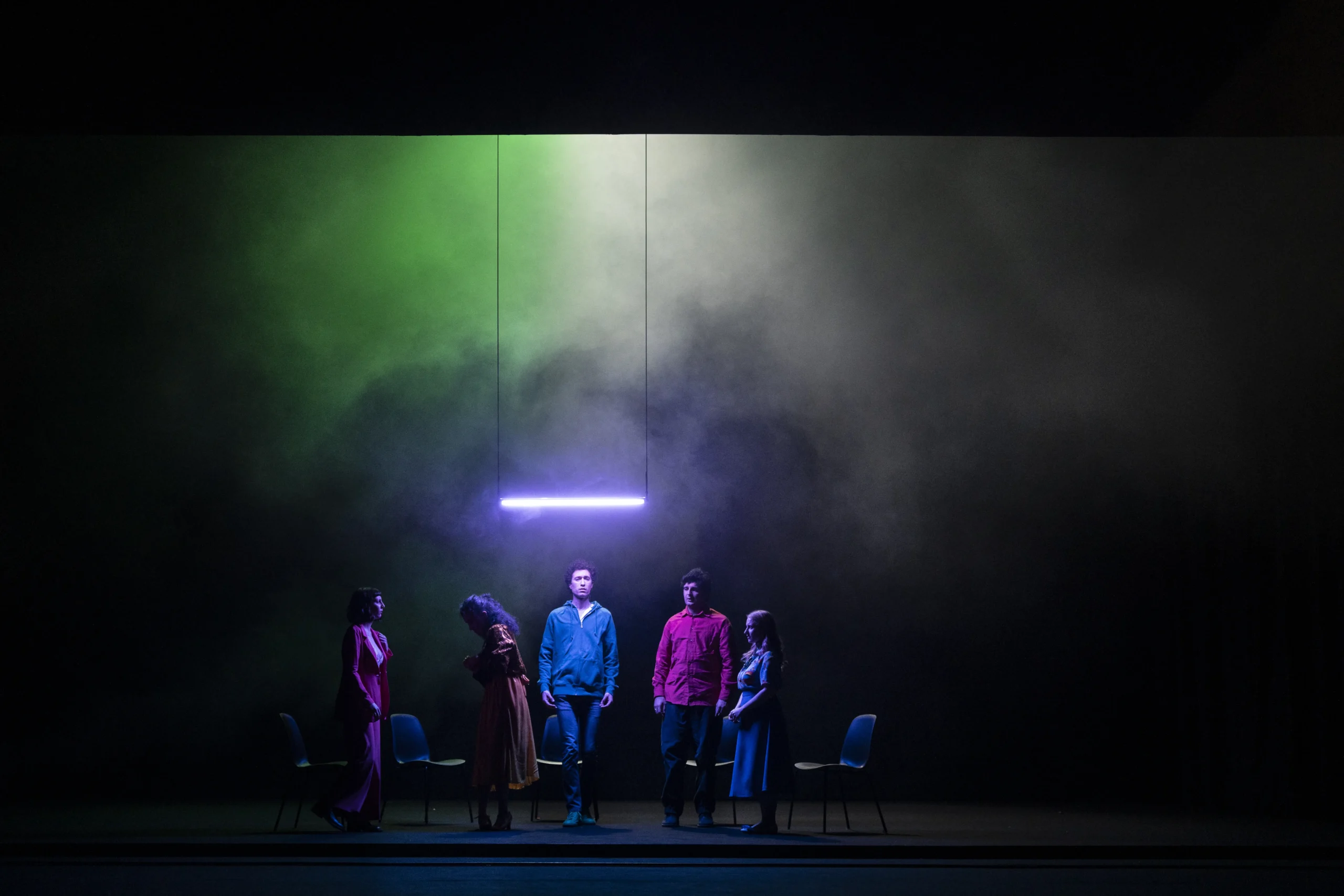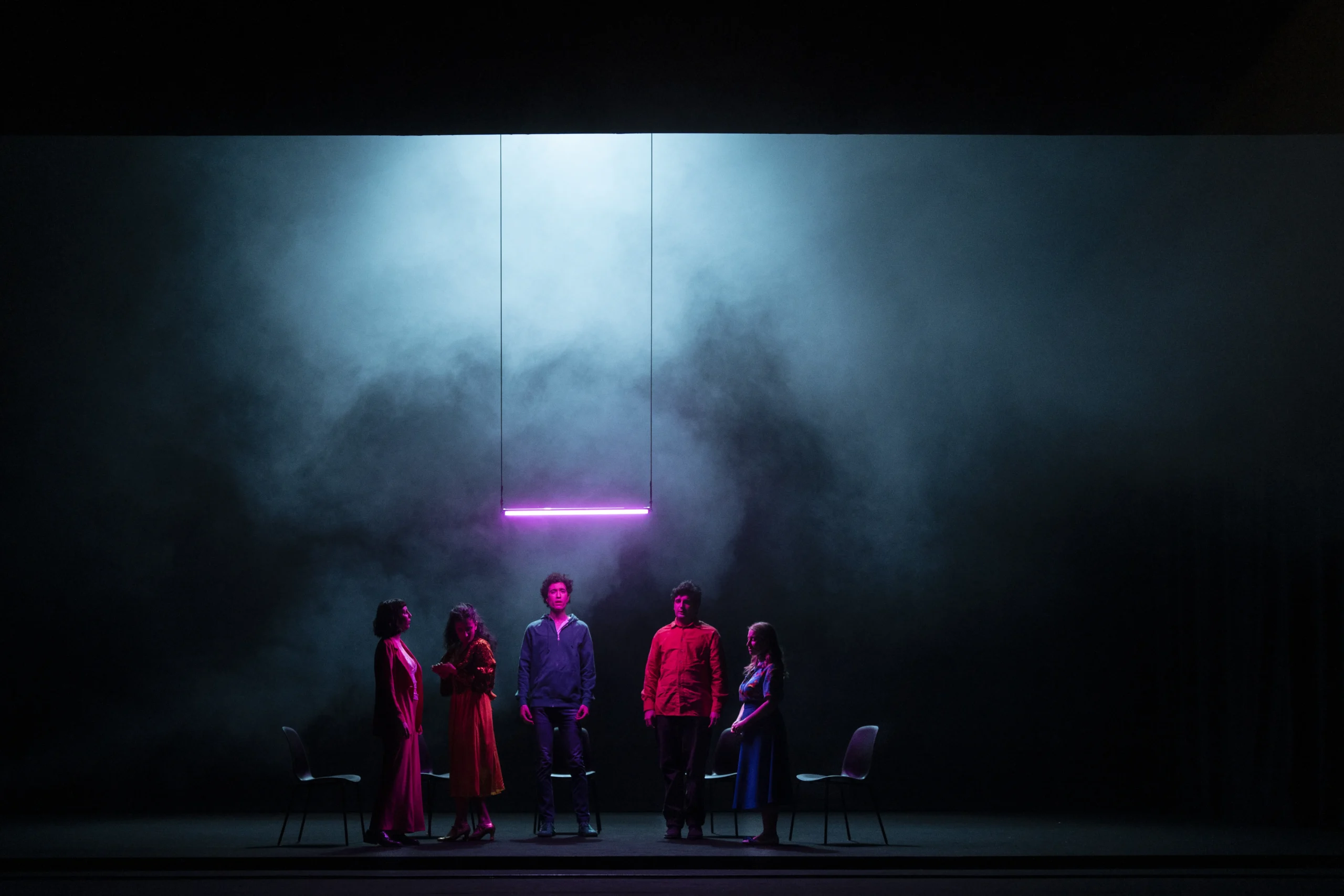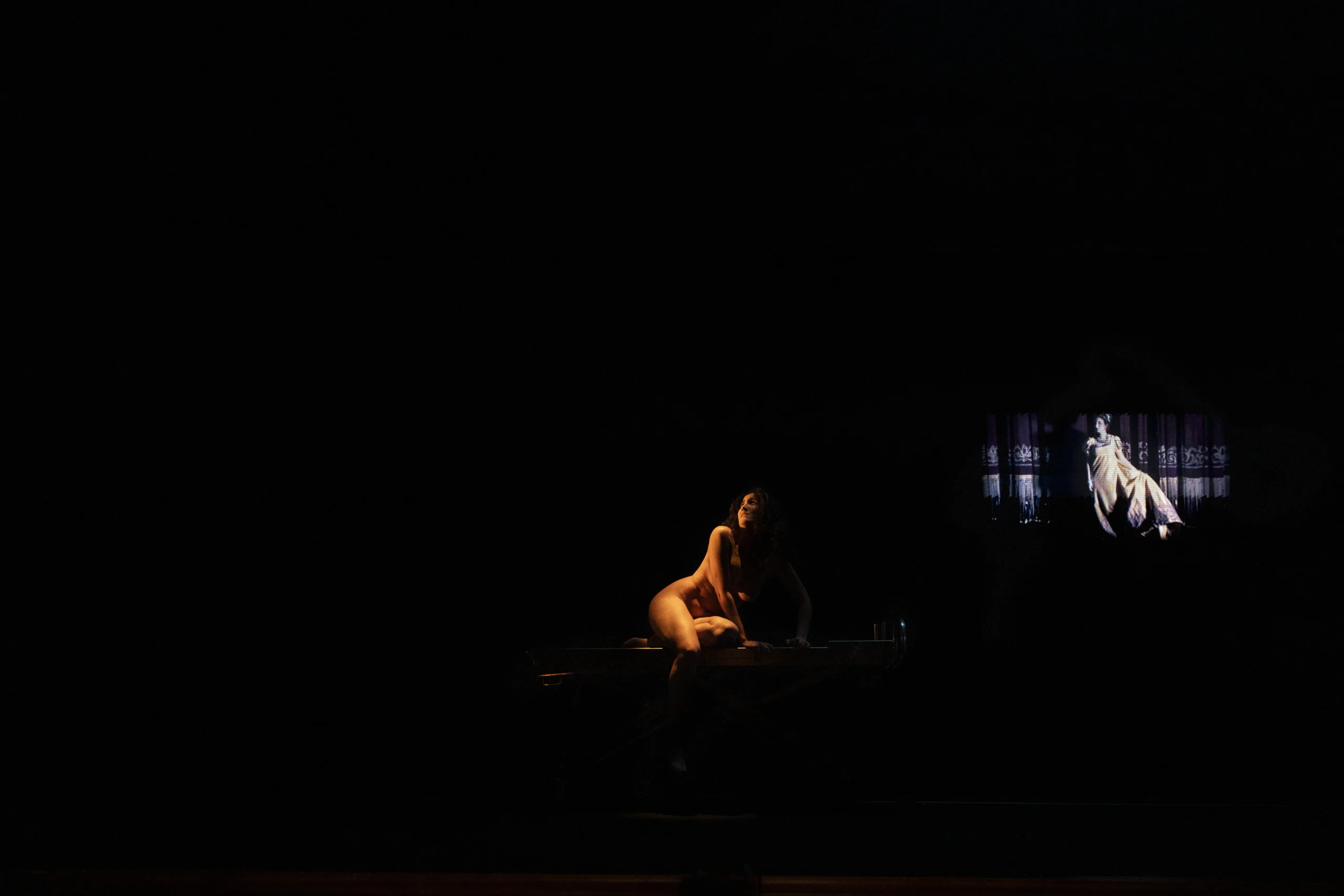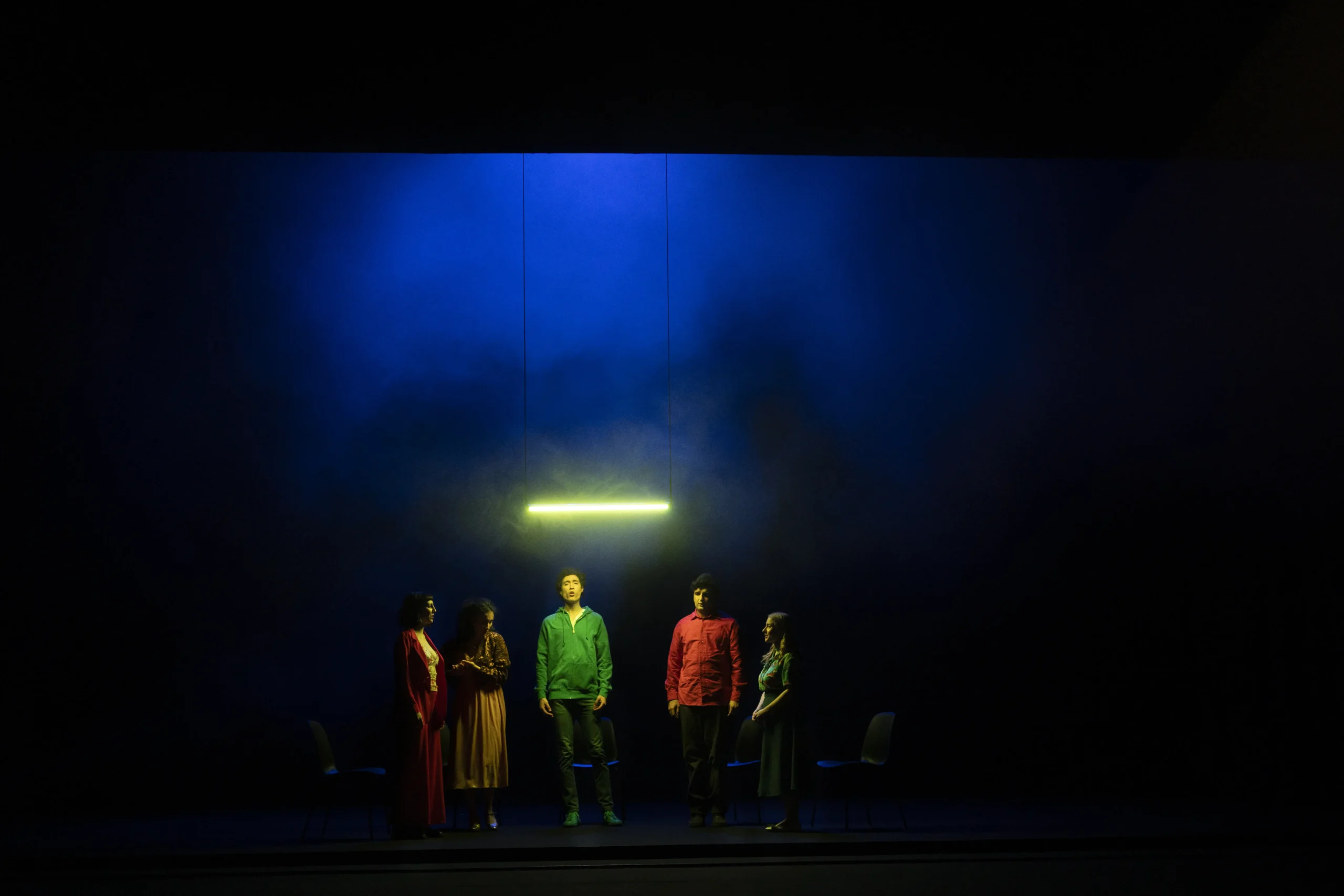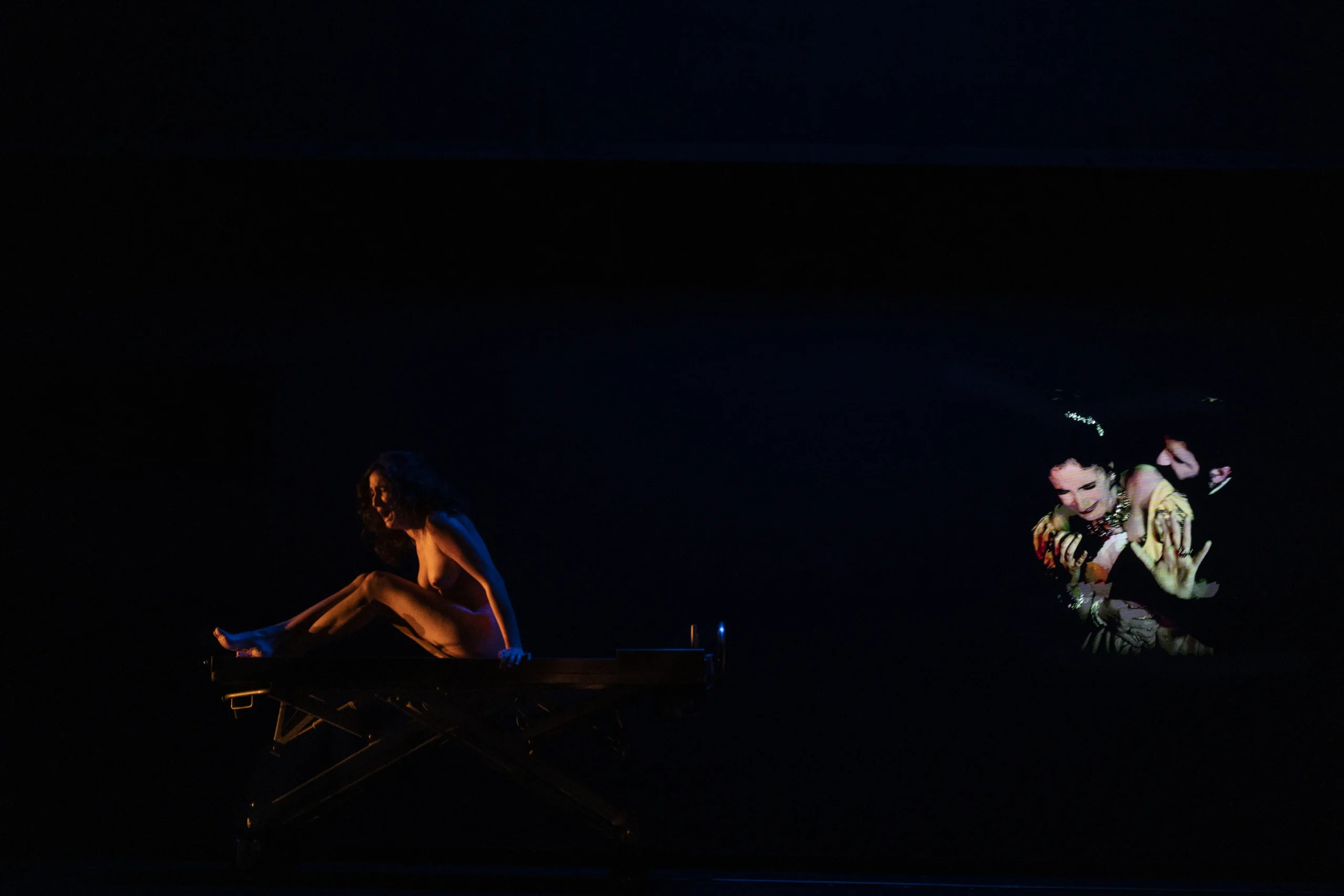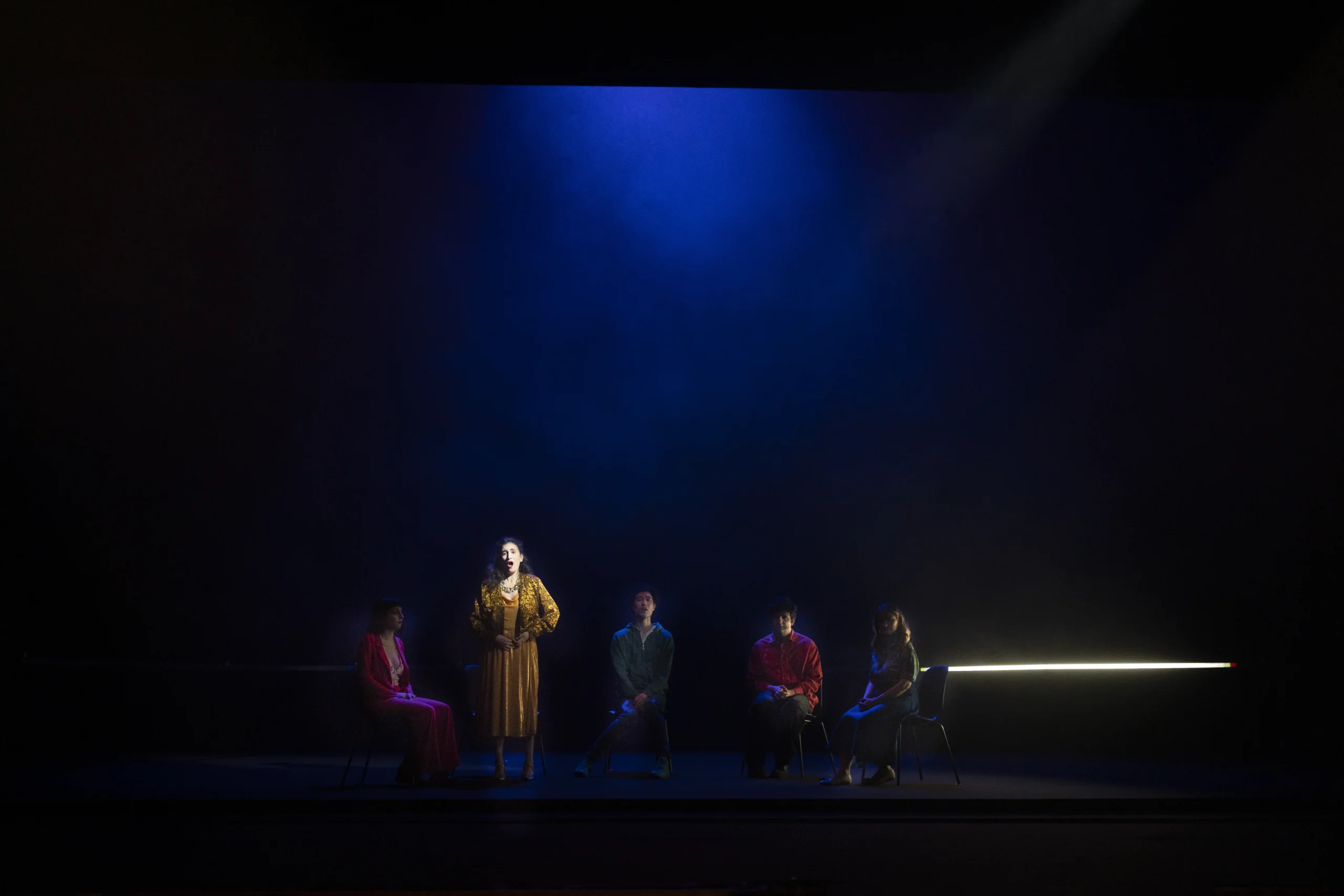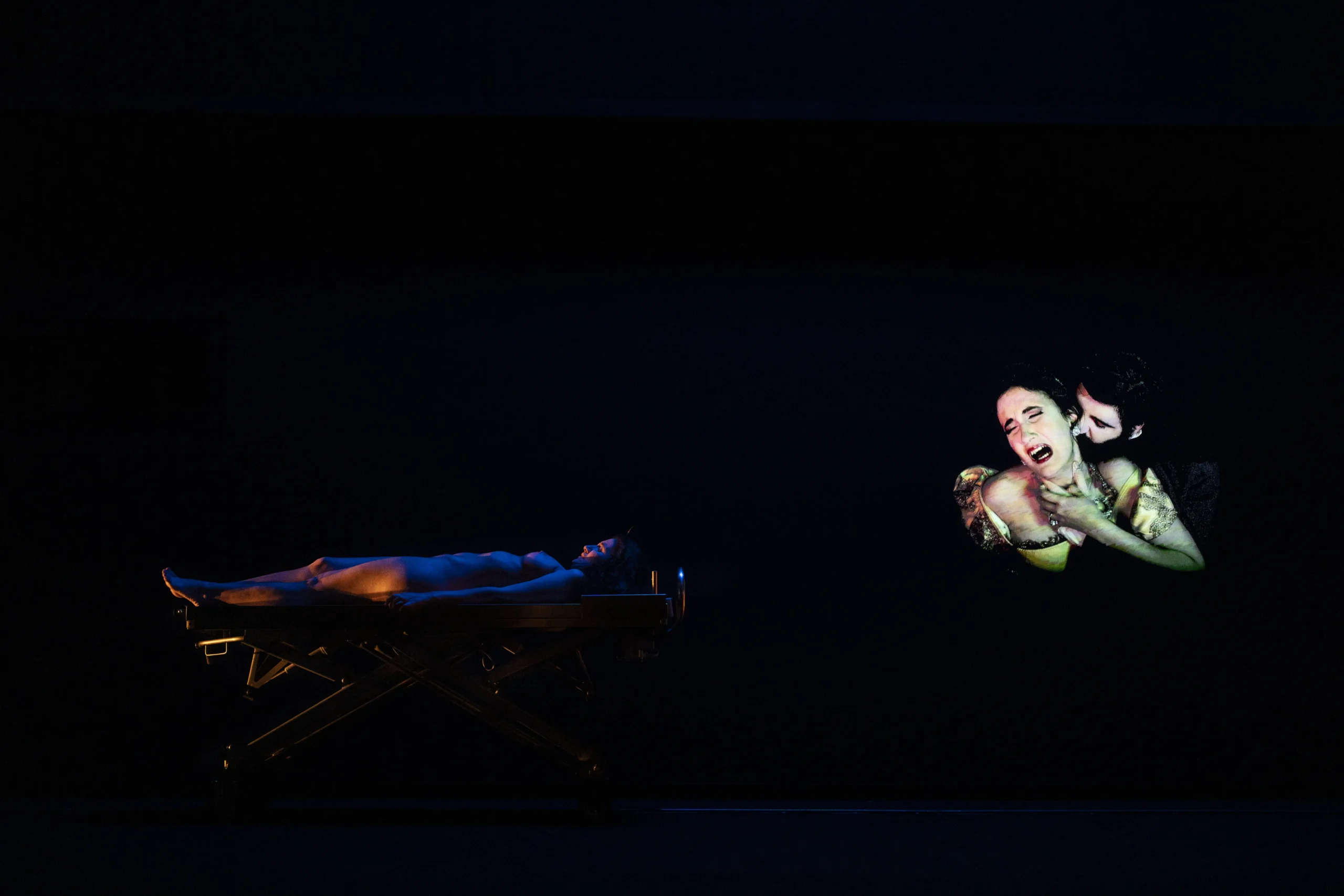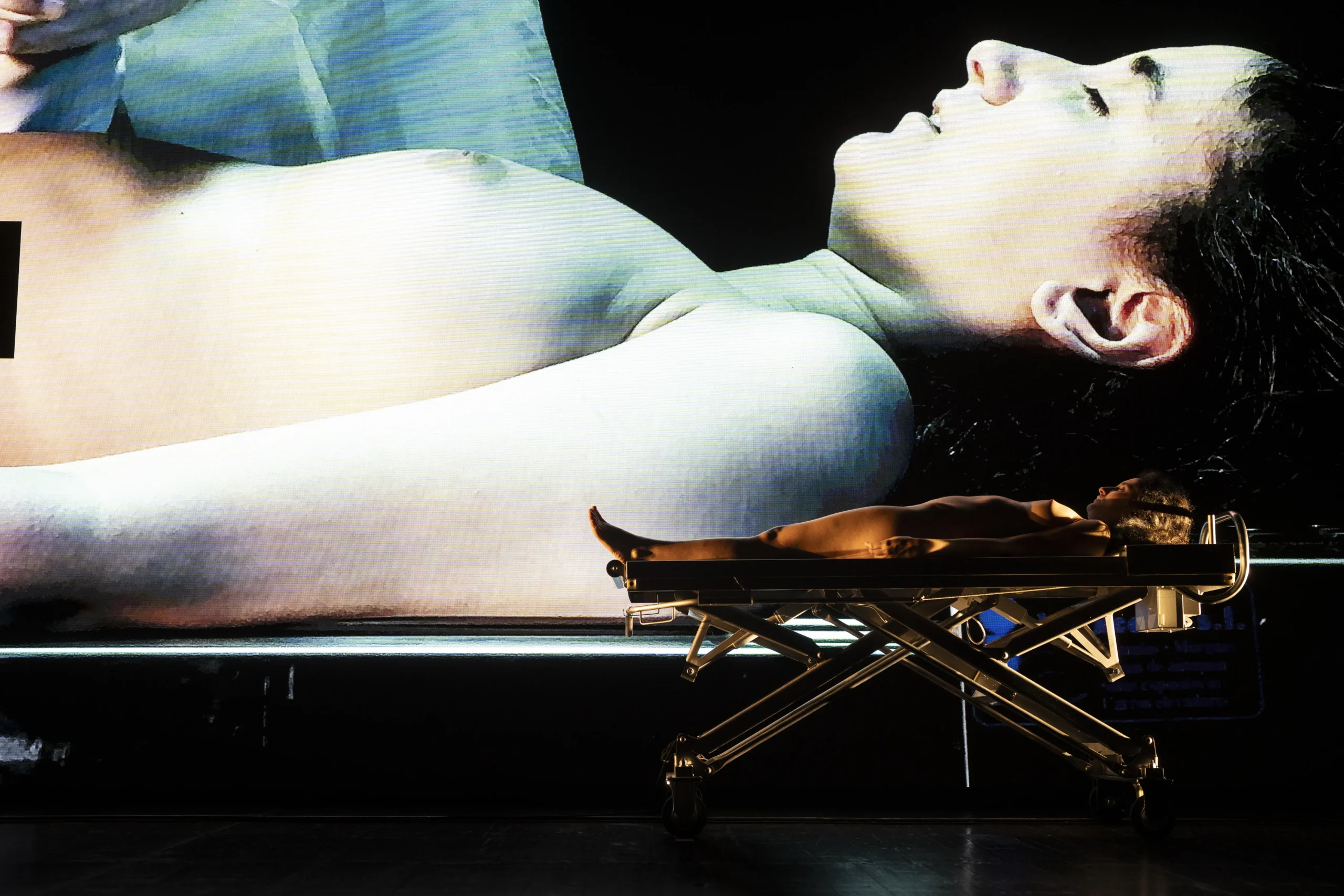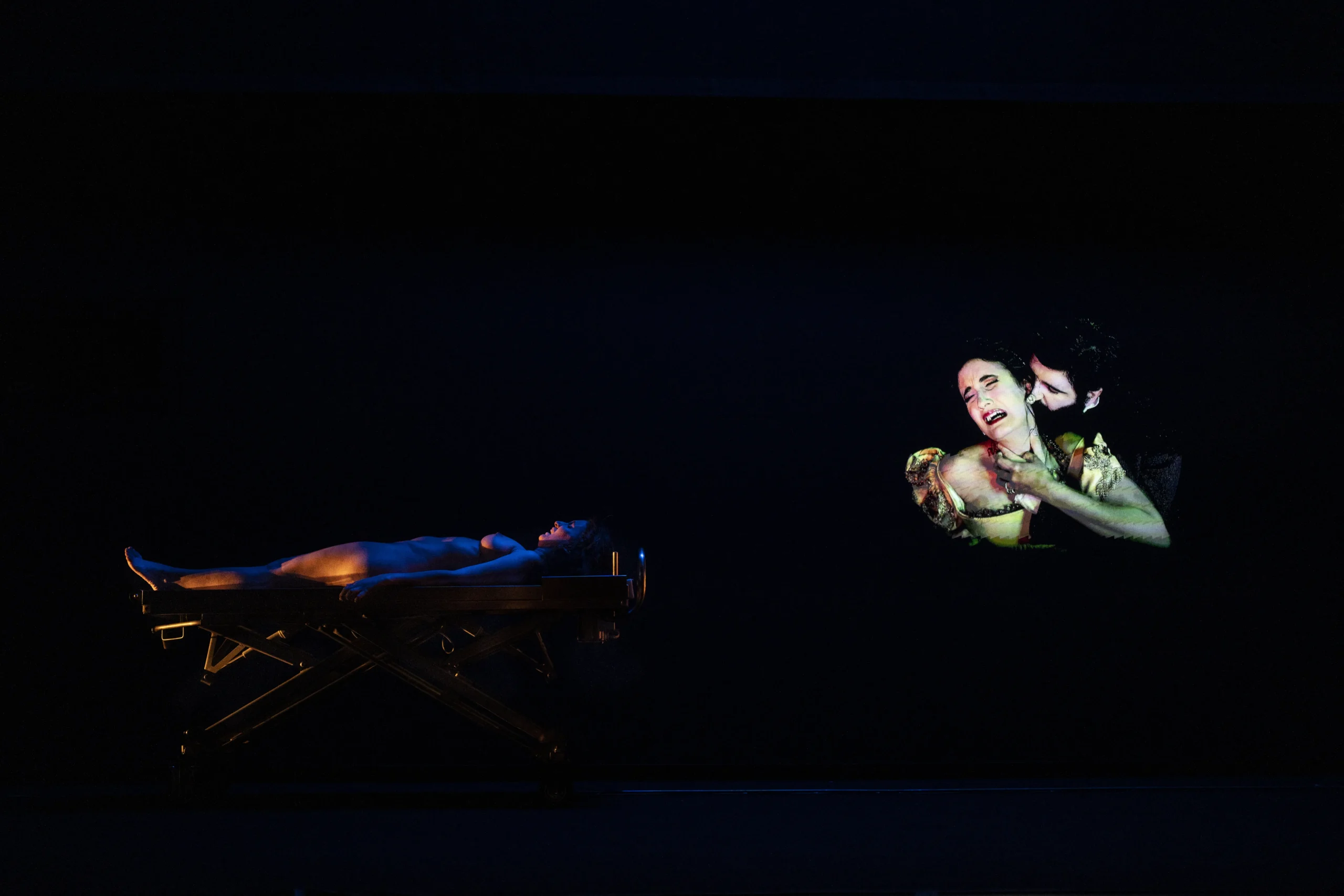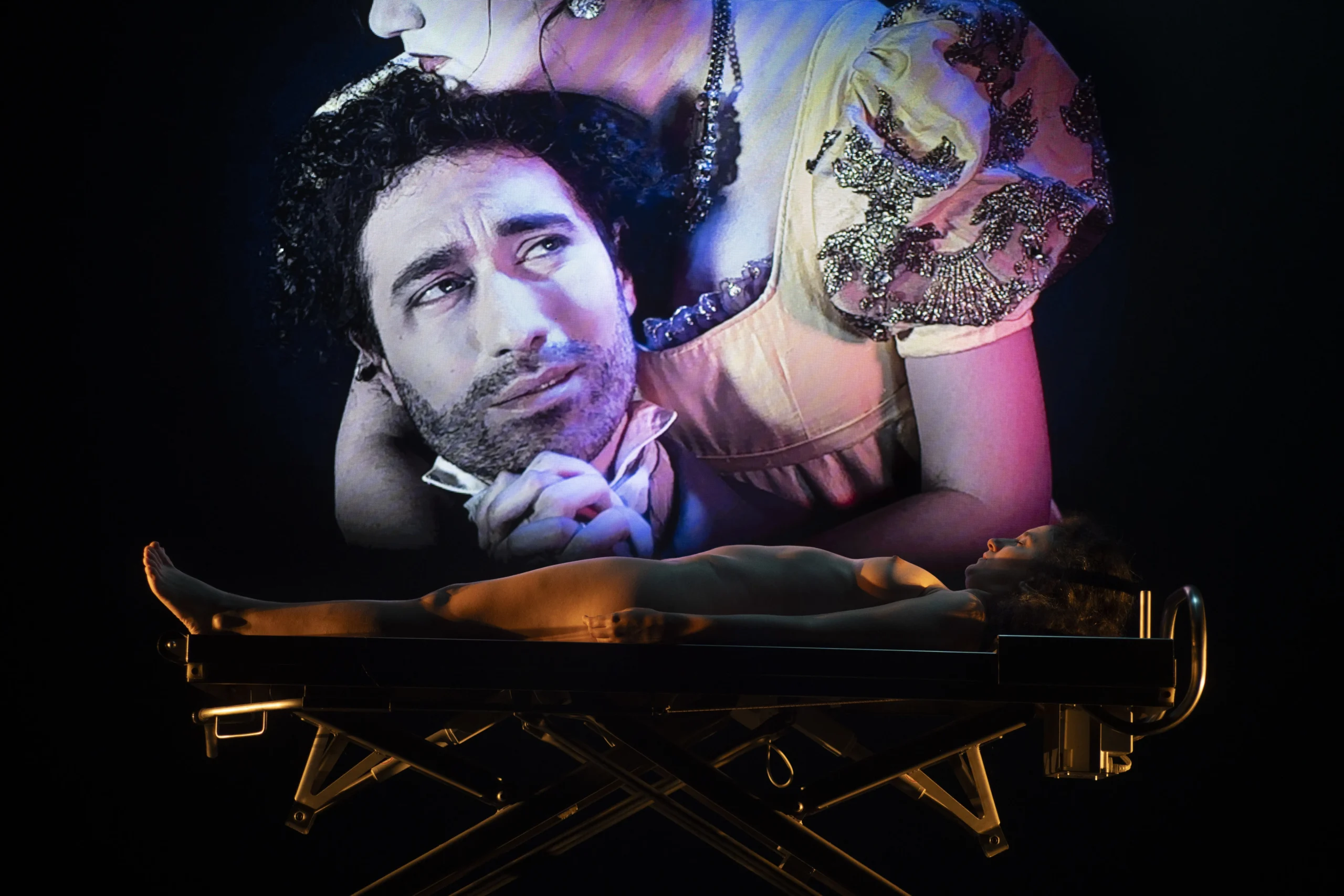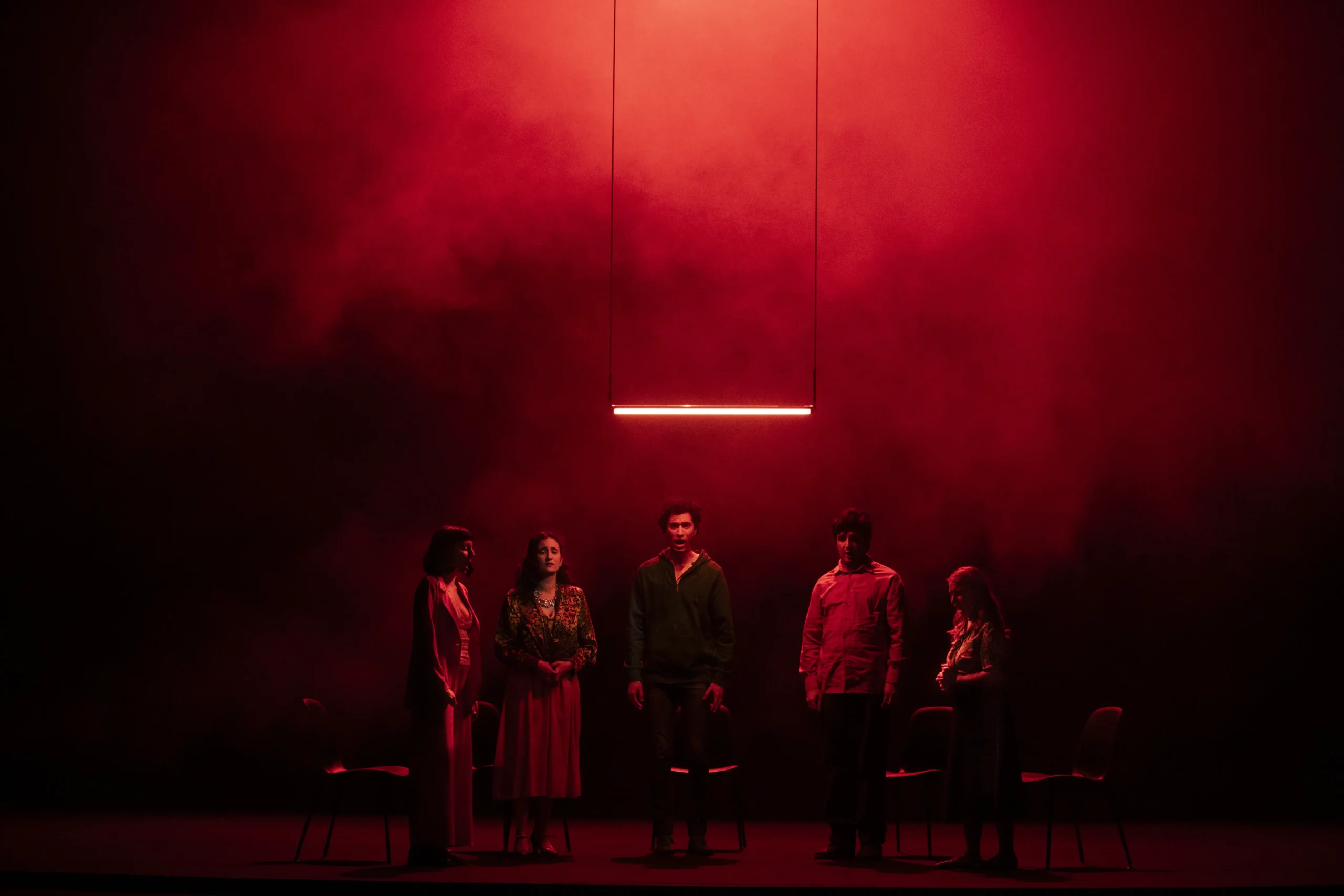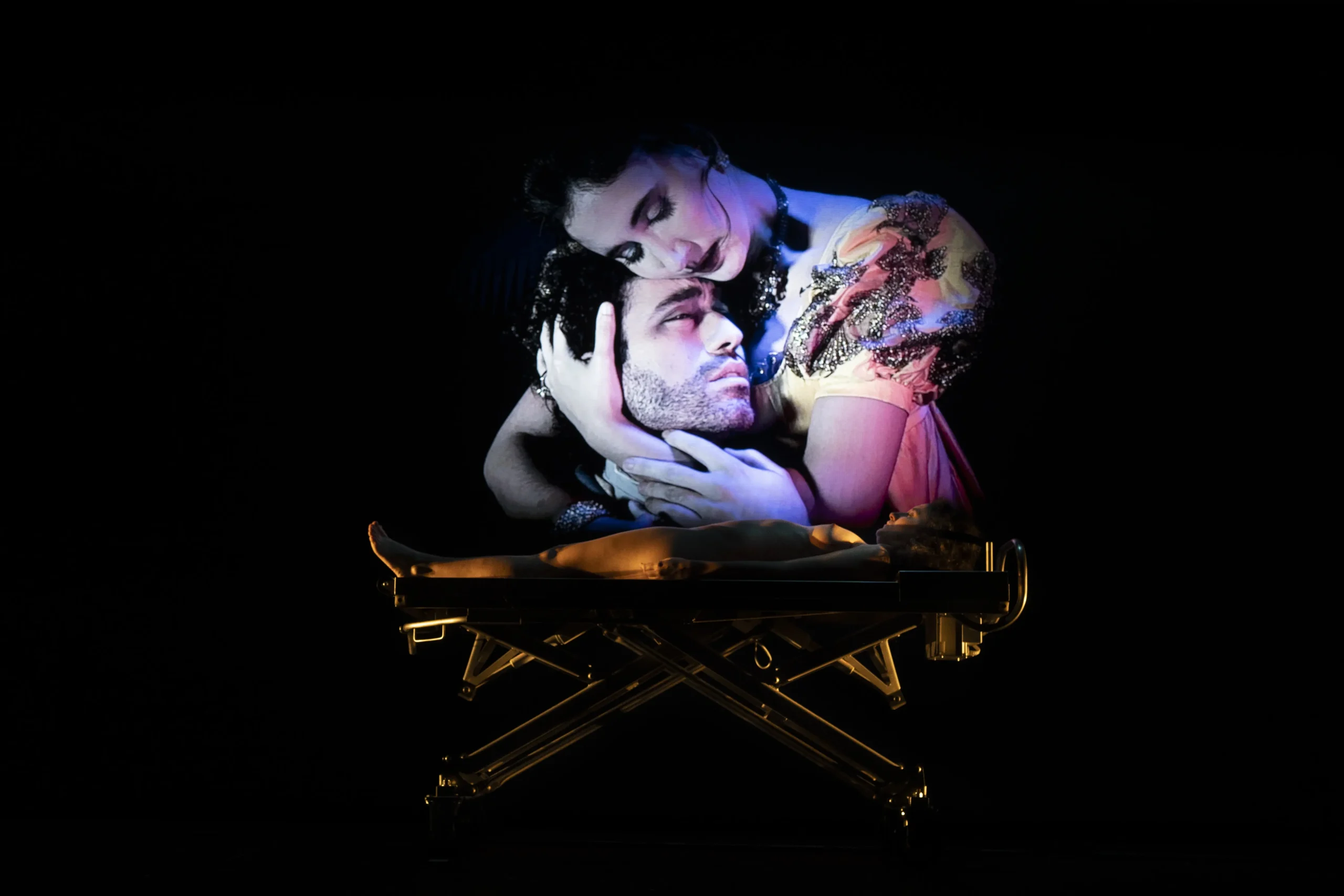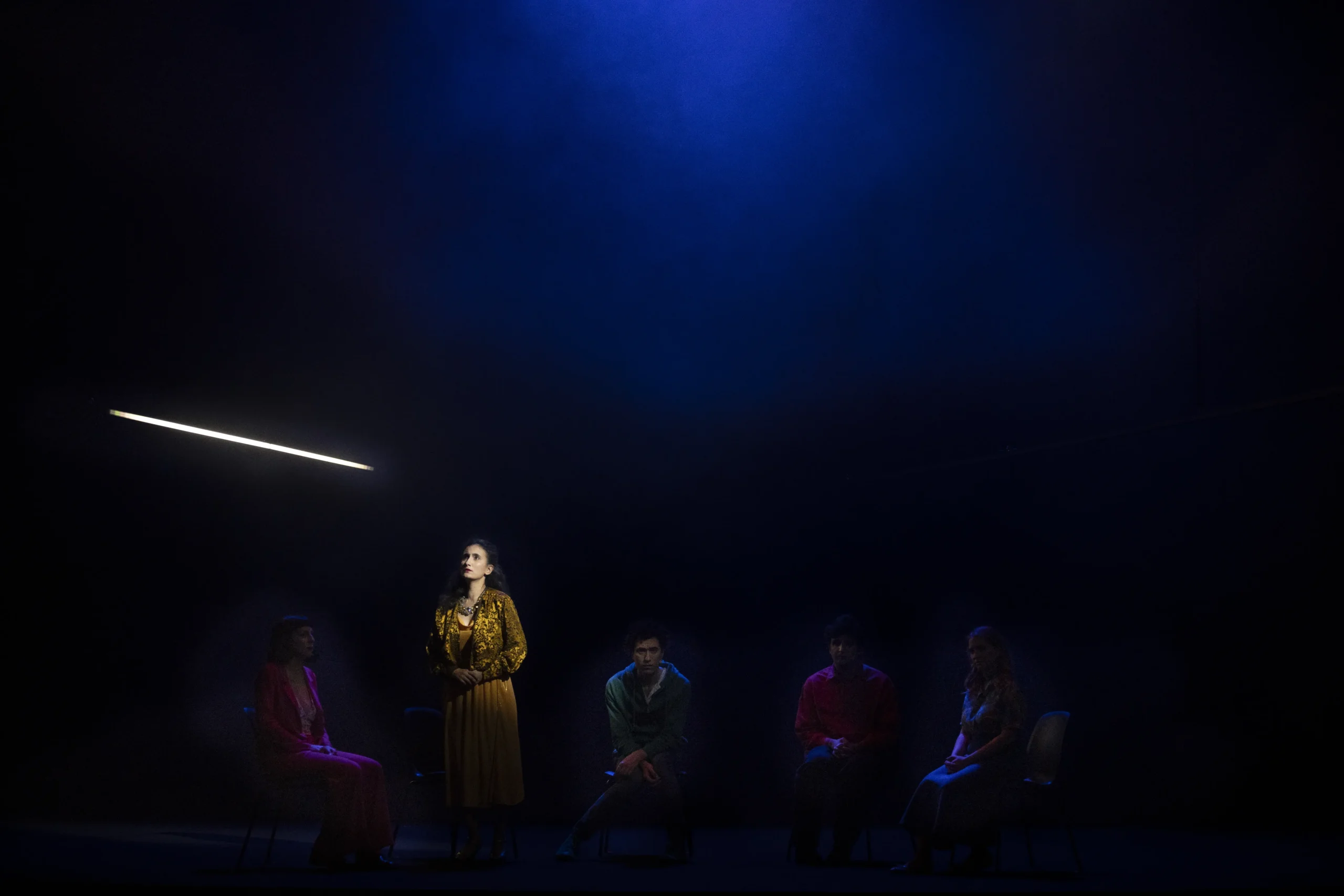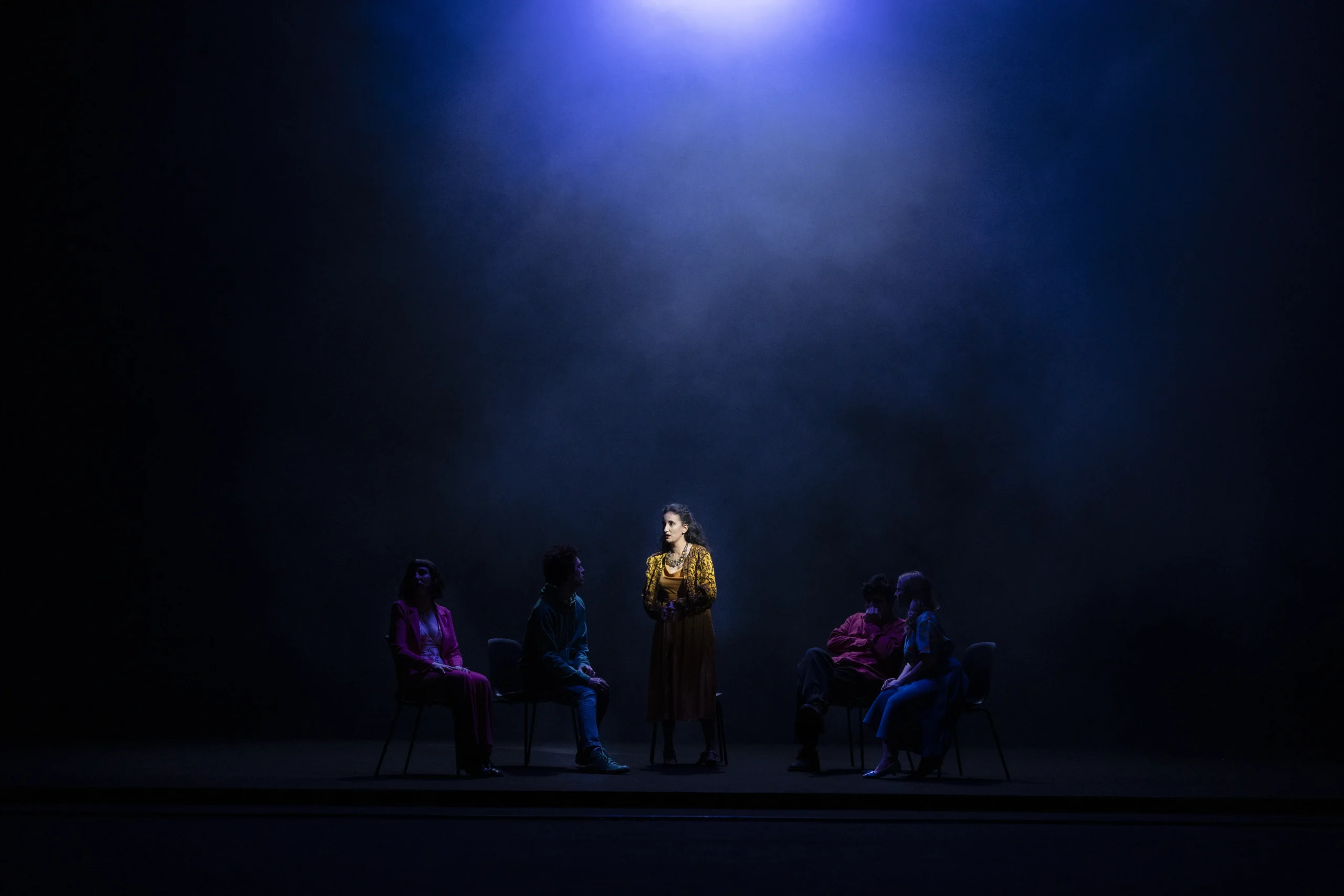My name is Floria
ONE-ACT OPERA
MUSIC BY VIRGINIA GUASTELLA
- Libretto by Virginia Guastella
- with parts freely inspired by Victorien Sardou, Giuseppe Giacosa, Luigi Illica, Percy B. Shelley, John Keats
- music by Virginia Guastella | featuring Maria Eleonora Caminada, Laura Zecchini, Anastasia Egorova, Danilo Pastore, Giacomo Pieracci
- performed by Icarus Ensemble
- sound direction and live electronics by Tempo Reale (Giovanni Magaglio, Damiano Meacci)
- conductor Marco Angius
- creative team Fanny & Alexander
- direction, set design, lighting, video by Luigi Noah De Angelis
- costumes by Chiara Lagani
- multimedia design by Michele Mescalchin
- new commission by Fondazione I Teatri / Festival Aperto
- production by Fondazione I Teatri di Reggio Emilia
Year : 2025
The action of My name is Floria takes place in the present day, freely inspired by the character of Floria Tosca – both from Sardou’s drama and the version by Illica and Giacosa for Puccini’s opera. It is well known that the story ends with Tosca’s suicide. But here, we imagine that she survives, thus transforming that ending into the beginning of a new story. Floria is therefore a contemporary woman, a victim of both physical and psychological trauma, bearing a complex and altered emotional world, far removed from the traditional operatic portrayal of women. Her past is made up of painful memories (including an incarnation of Scarpia), her present consists of depressive episodes, anxiety, and mental projections of her fragmented personality. However, it is also marked by a process of therapeutic sharing with others in a similar condition, which will restore her balance and trust. These various dimensions are embodied by four vocal performers, each playing multiple roles and forming the chorus.
“I asked myself what might be happening in Floria’s mind just after she fell, still lying on the ground, pressed against the asphalt. (…). The height, measured in meters from which one can fall, was never the focus of my reflection. There had to be a condition of suffering and a fall – simply getting hurt. A psychological, emotional, physical pain. A traumatic condition with a story behind it that needed to be told. But a story – and this is a crucial difference that makes it a piece of musical theater, mine – in which many of us have been both spectators and participants. I began to imagine what Tosca – already my Floria – might be thinking, saying, remembering, even sonically. So I listened to Puccini’s opera with this premise in mind.”
— Virginia Guastella
“This death, evoked from the very beginning through the echo of Tosca’s suicide that opens the opera, led me to design a specific space – that of a morgue or autopsy room. This place is at once a concrete, austere, cold, rigorous, orthogonal space, like a hospital laboratory, and also a representation of the protagonist’s mind – the projective site of her anxieties and traumatic memories that return to haunt her compulsively, in the form of obsessive images, flashes, stroboscopic effects, blurred, anamorphic visions. Often in an autopsy room there is a window, a pane of glass, that looks into another small room – a space where the magistrate conducting the investigation, in cases of violent death, may observe the progress of the ongoing examination.”
— Luigi Noah De Angelis
Premiere: Teatro Ariosto, Reggio Emilia, Friday, May 16, 2025, at 8:00 PM; Sunday, May 18, 2025, at 3:30 PM.
[Photos by: LUCA DEL PIA]
